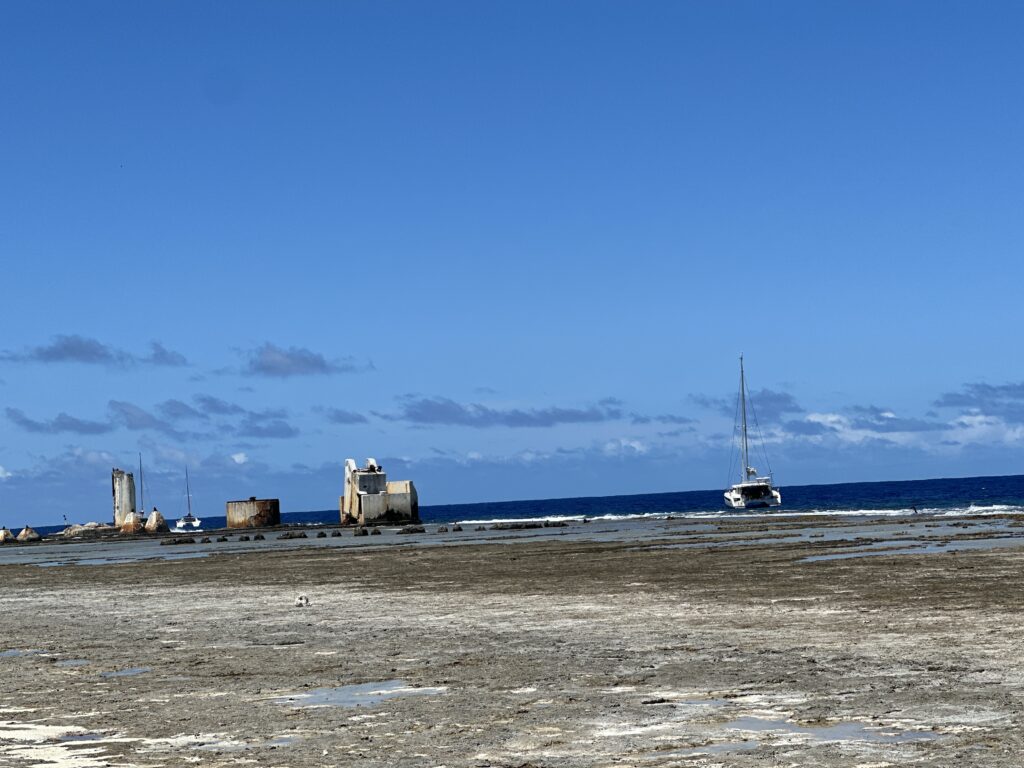We reached Makatea after an overnight sail from Moorea. It went fairly smooth, as we are now getting used to the Pacific waves being quite choppy with a rapid distance between them. We were very happy that our fishing luck finally has come back, as we caught a 6kg Mahi Mahi on the passage.
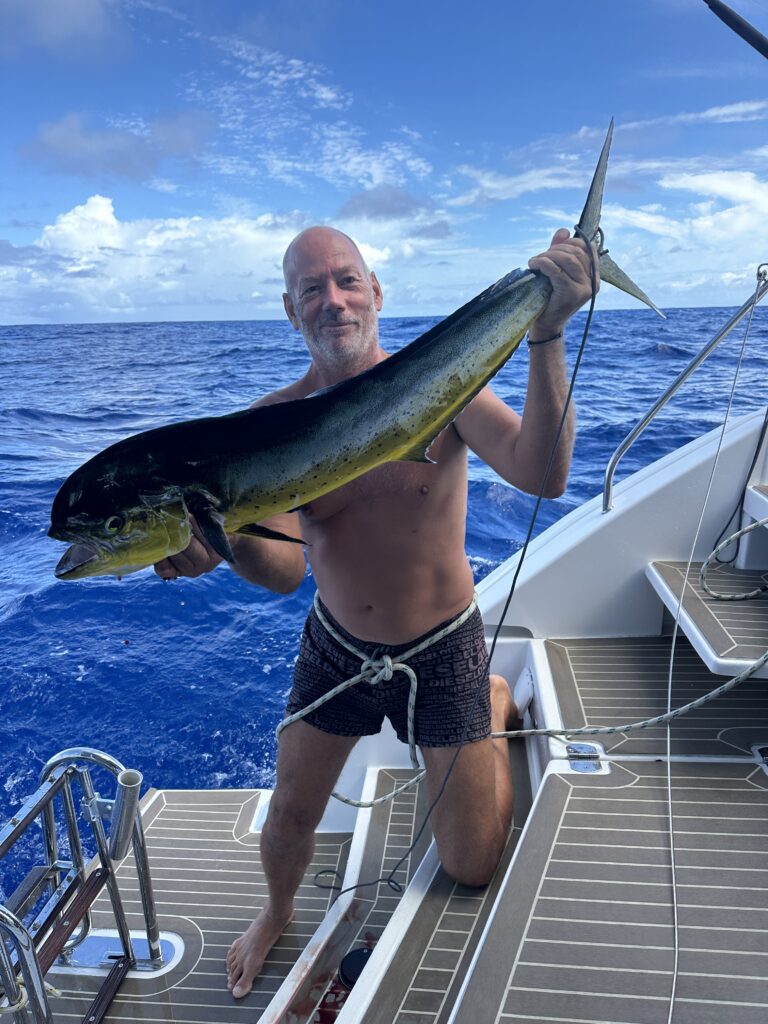
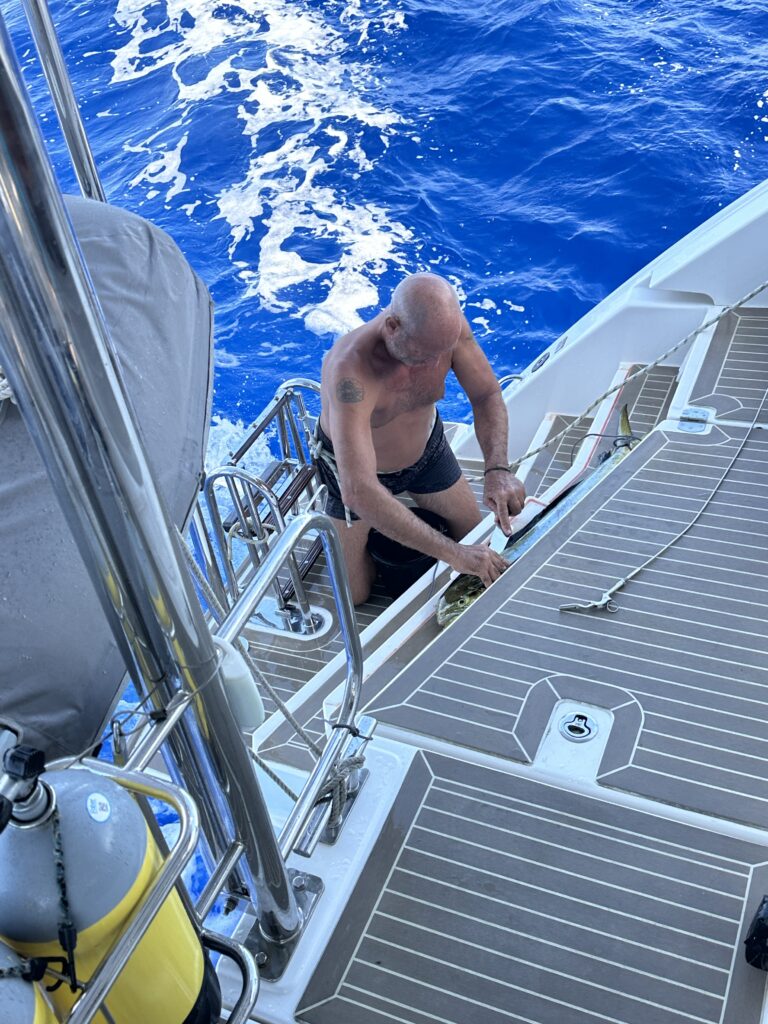
Makatea is unique in its geological structure, as it is a raised atoll. This means that the reef surrounds the atoll, just like the other atolls of the Tuamotu archipelago, however the island itself is raised on top of the reef, where the other atolls would have a lagoon.
Makatea looks pretty much like a normal island from afar. However, we soon discovered the shelf surrounding the island. There is no way to anchor there, as it goes from 0 meters depth by the reef, and then it abruptly falls vertical to several hundred meters depth.
There are a few moorings that the locals have made available for passing boats. There is no way to know whether one will get a spot, so it was with big excitement we approached the mooring field. There was only one boat there, but we soon discovered that the five moorings we expected to be there, were now down to only two.
We called a local contact we had found through a fellow cruiser, and he could inform us that the other moorings had been broken during this season. The only available mooring was very close to the reef, and we were not sure we were up for it…
We observed the situation for a while, before we decided to give it a go. With little winds forecasted for the next few days, we were fairly comfortable. However, if the winds turned, we would only be about 15 meters from the reef, giving us next to no time to react from going aground.
We ensured we had extra lines attached both to the mooring rope as well as the chain itself. We decided to stay on the boat for the first 24 hours, and not go ashore.
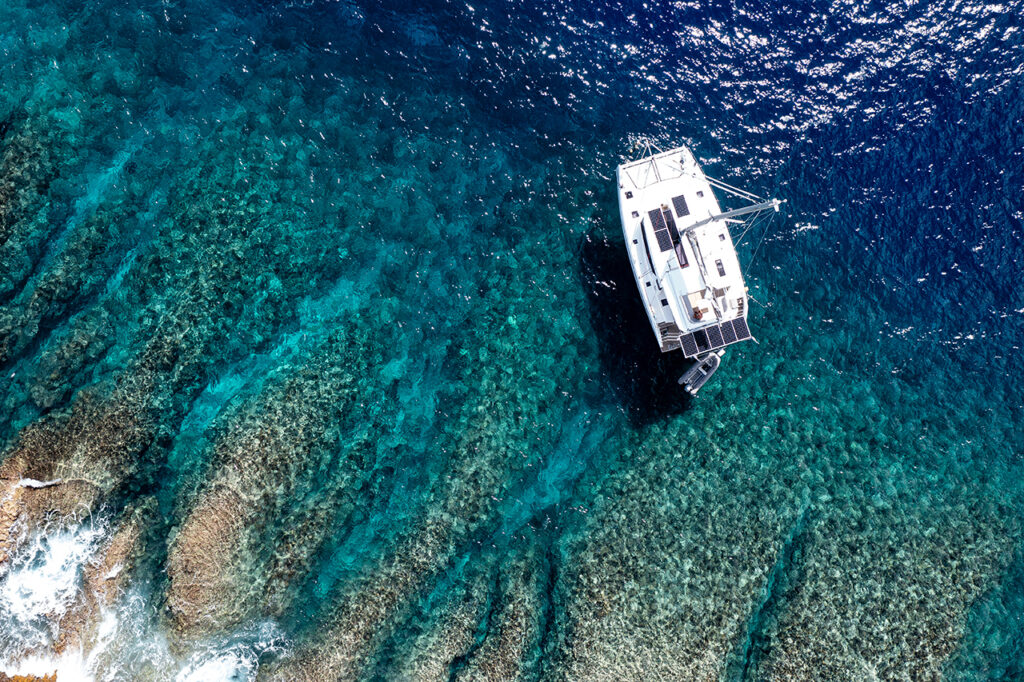
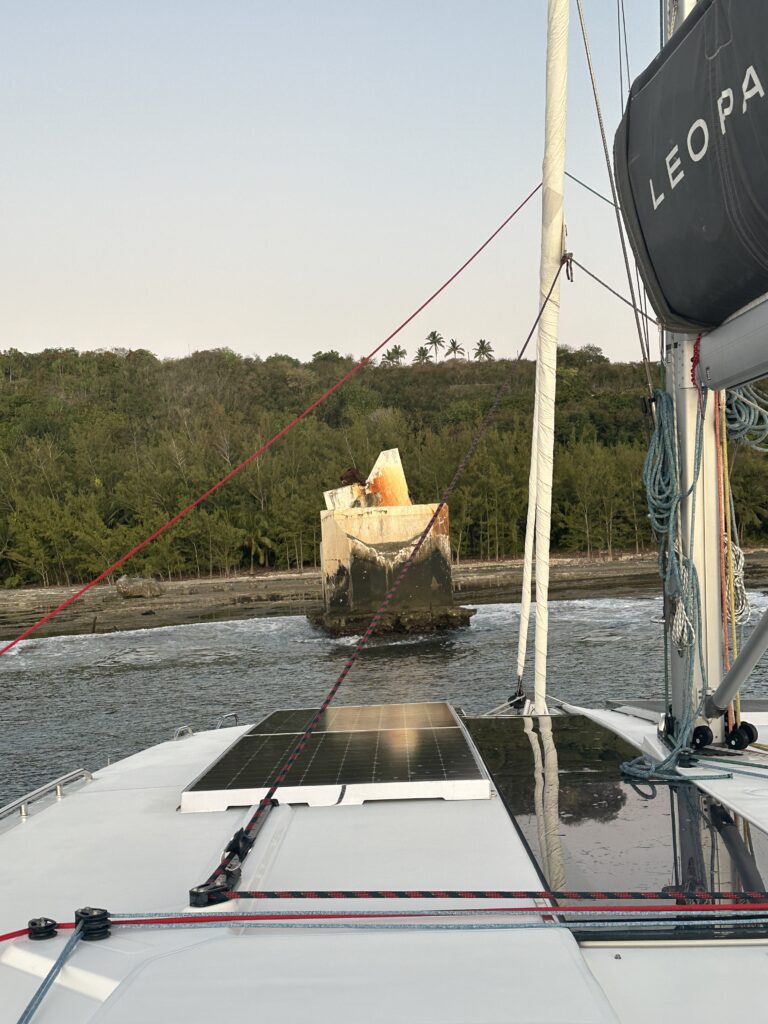
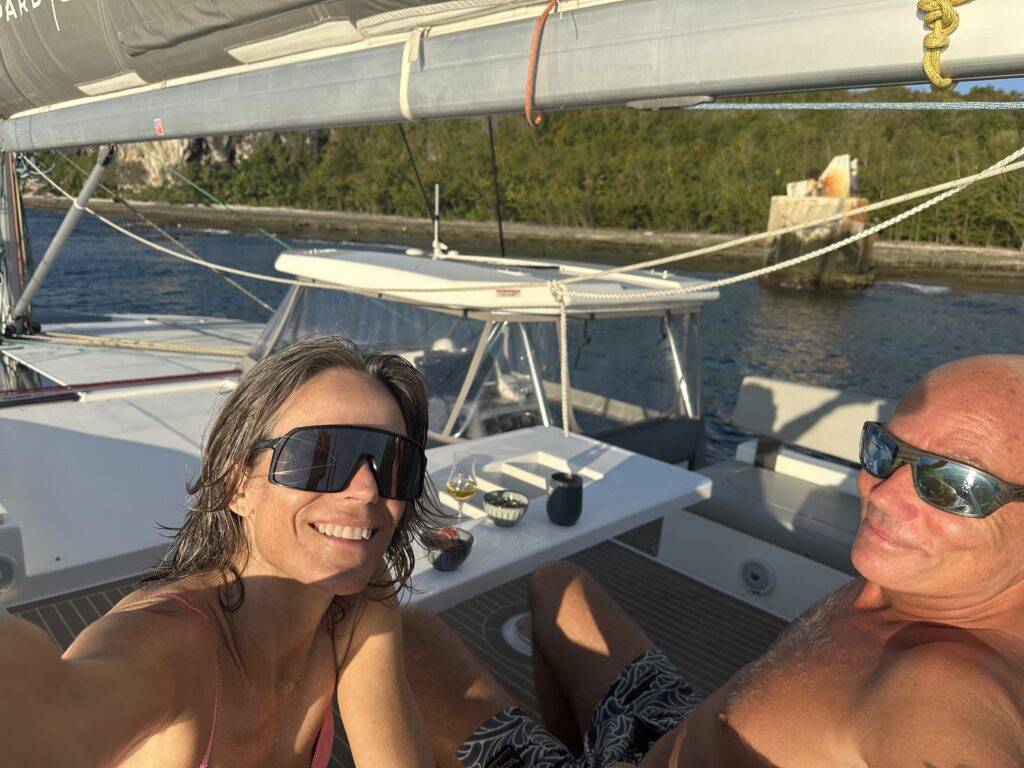
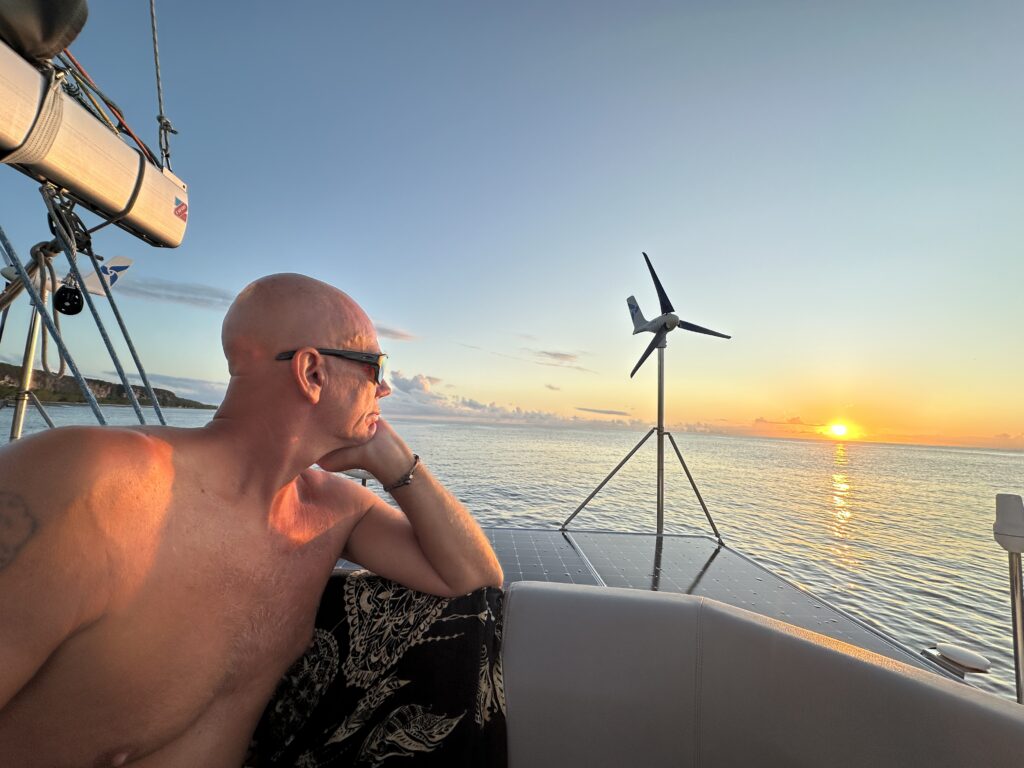
Sitting right over a drop, did provide us with an opportunity to dive straight off the boat. This meant we also could check out the chain and mooring a little further.
We jumped in the water, and had a peaceful dive by the wall. It is something special about diving a very deep wall, as one is hanging in the deep blue, and cannot see the bottom. The dive itself was interesting, with some different fish and a group of four white tip sharks which lived in a cave right underneath our boat. They seemed very unhappy that we came and bothered them, so we observed them from a distance.
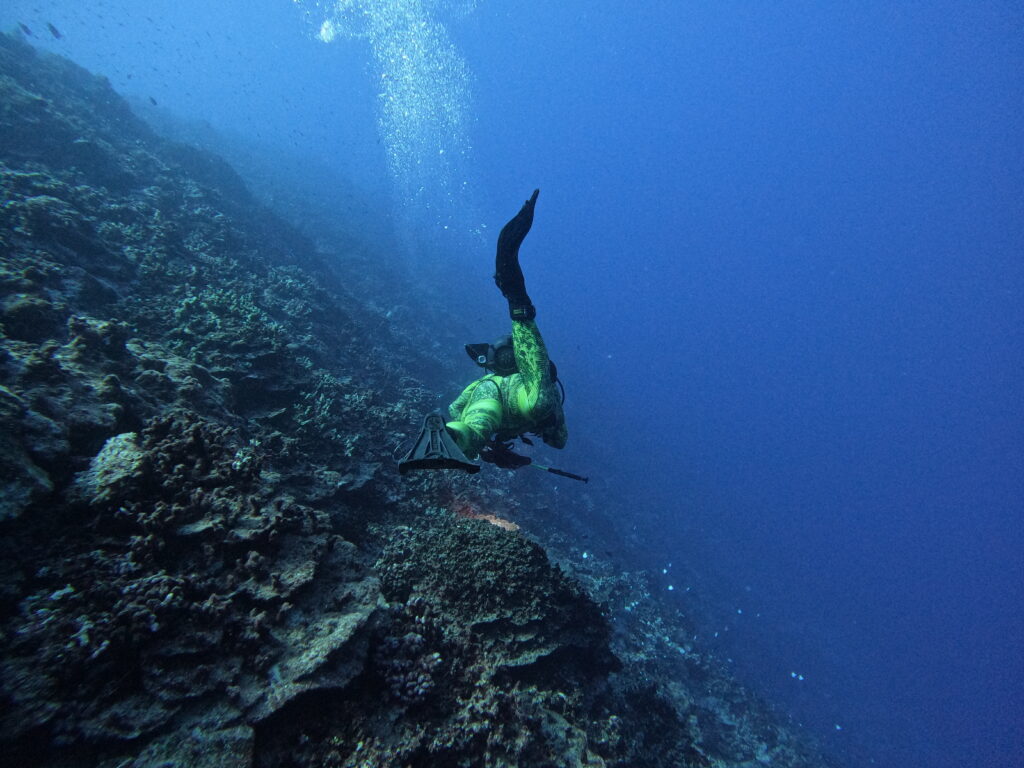
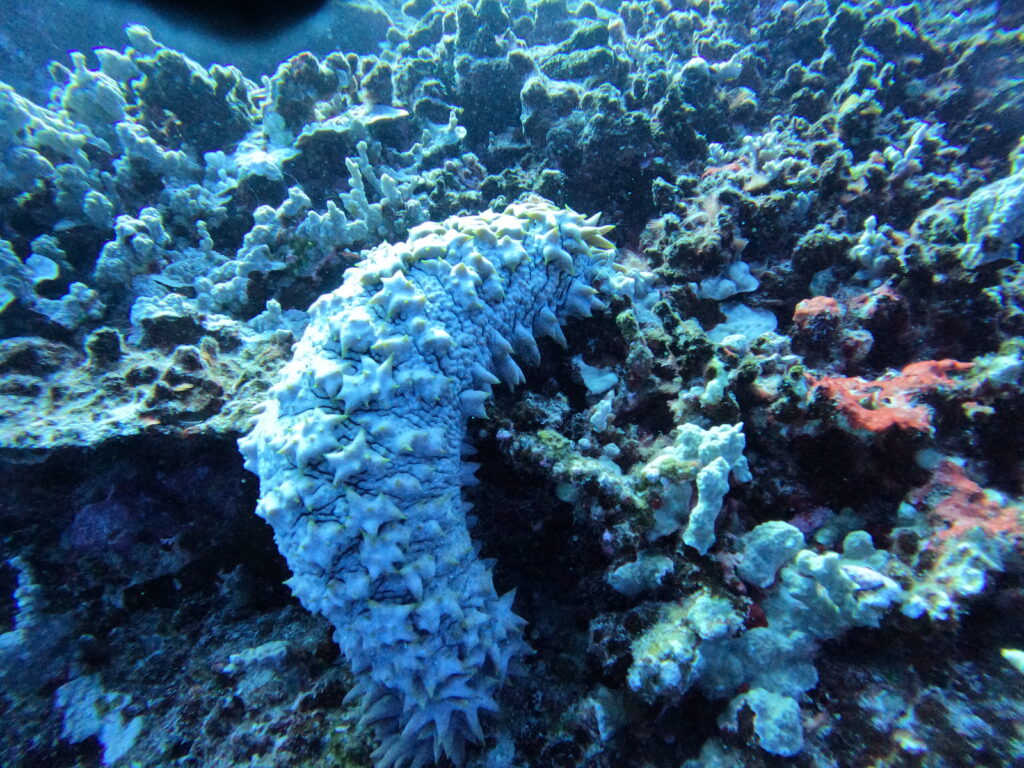
The following day, we decided that it was safe to get off the boat to explore the island, as the wind had died somewhat.
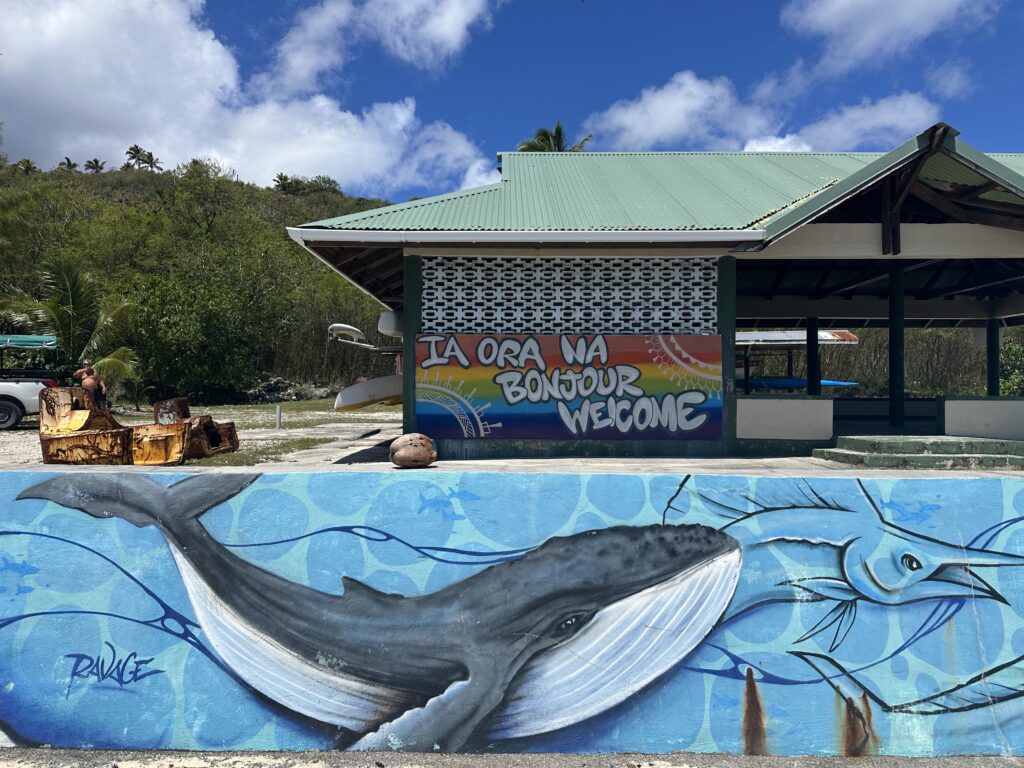
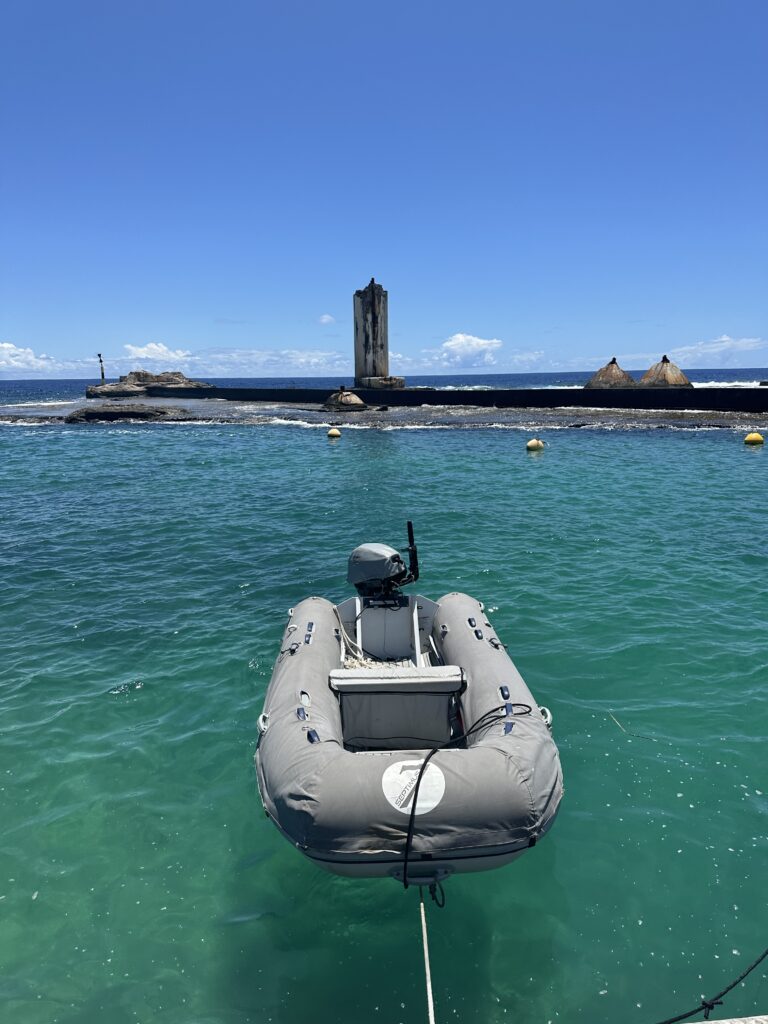
We checked out the harbor, and couldn’t miss the opportunity to take pictures of Noxoma so close to the reef. It certainly looked quite hairy…
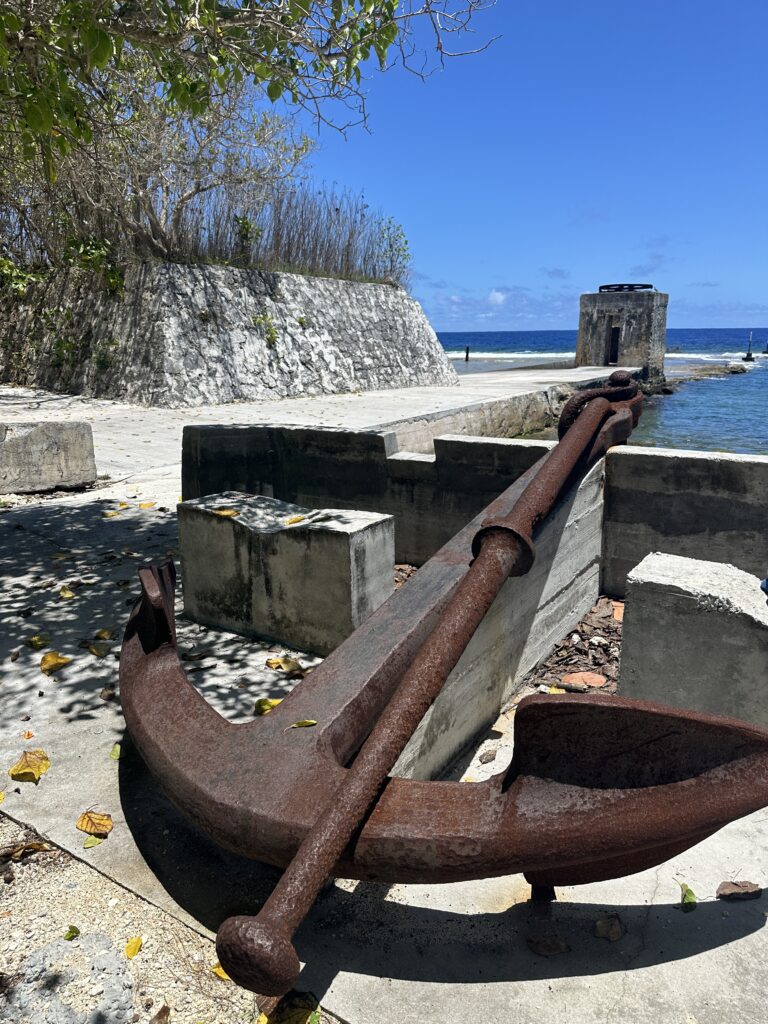
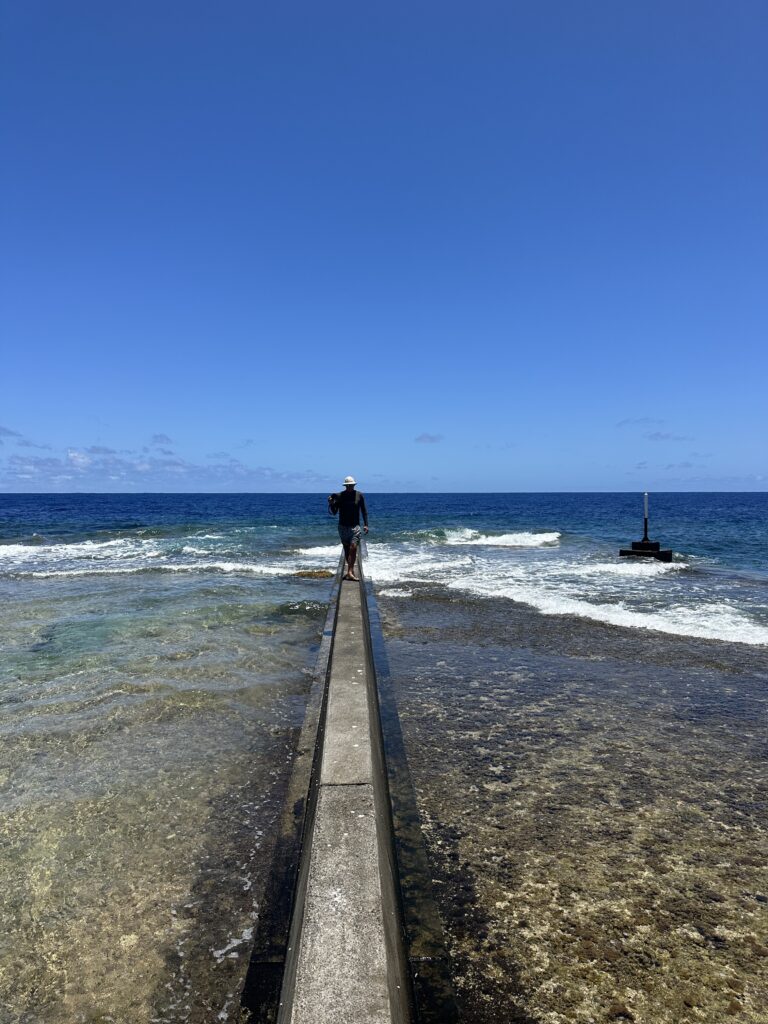
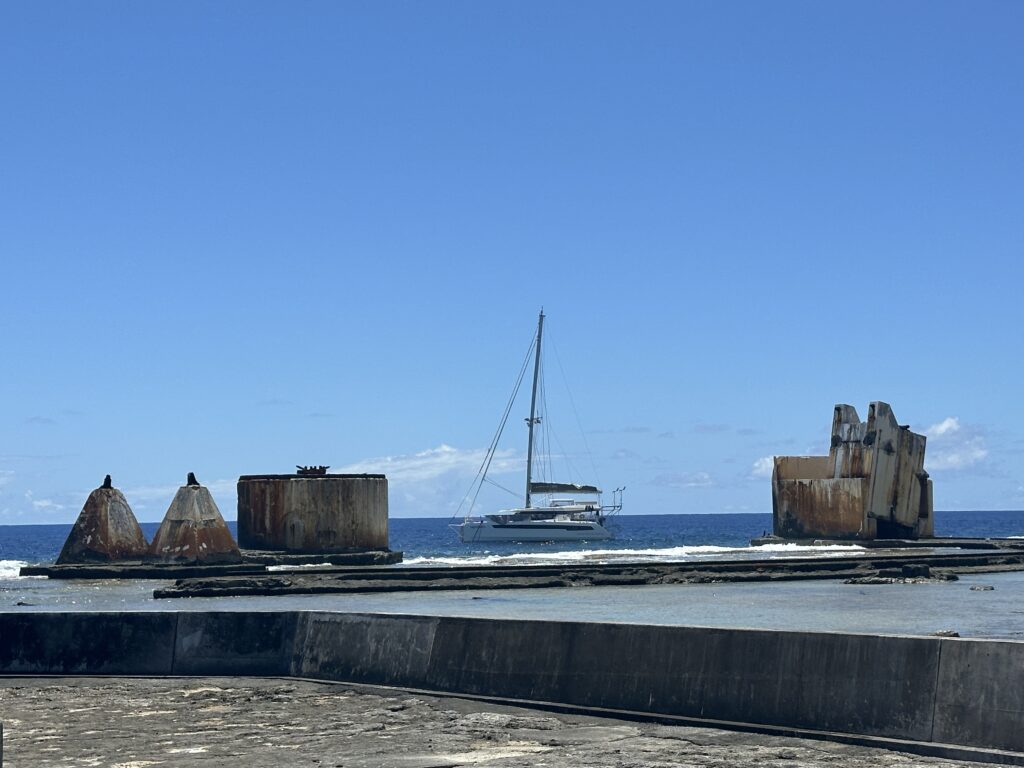
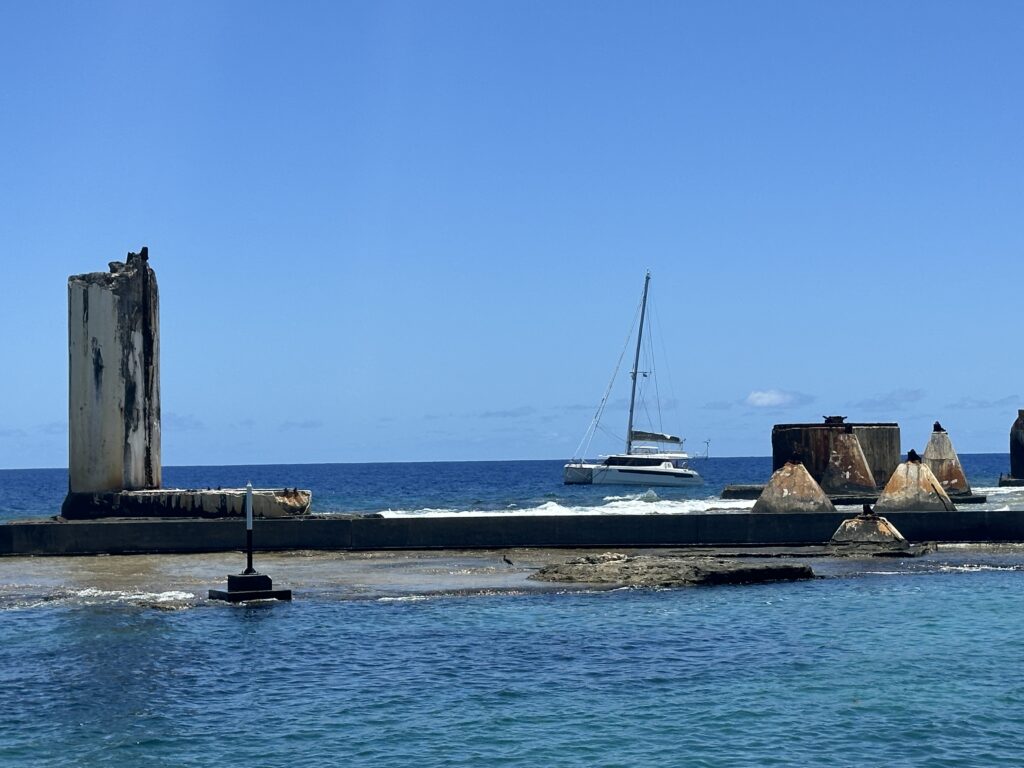
We had arranged a tour with Julien, who is the mayor of Makatea. He picked us up at the docks in his truck, and we jumped in the back. He started the tour by taking us to the east side of the island, where we came to a beautiful beach.
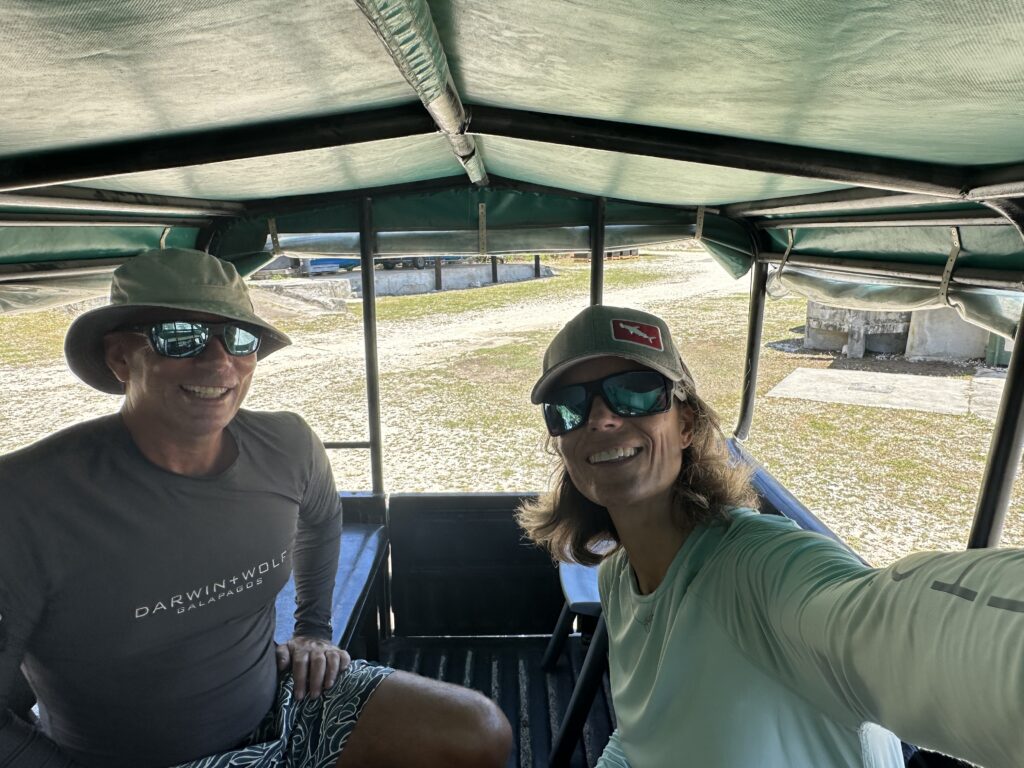
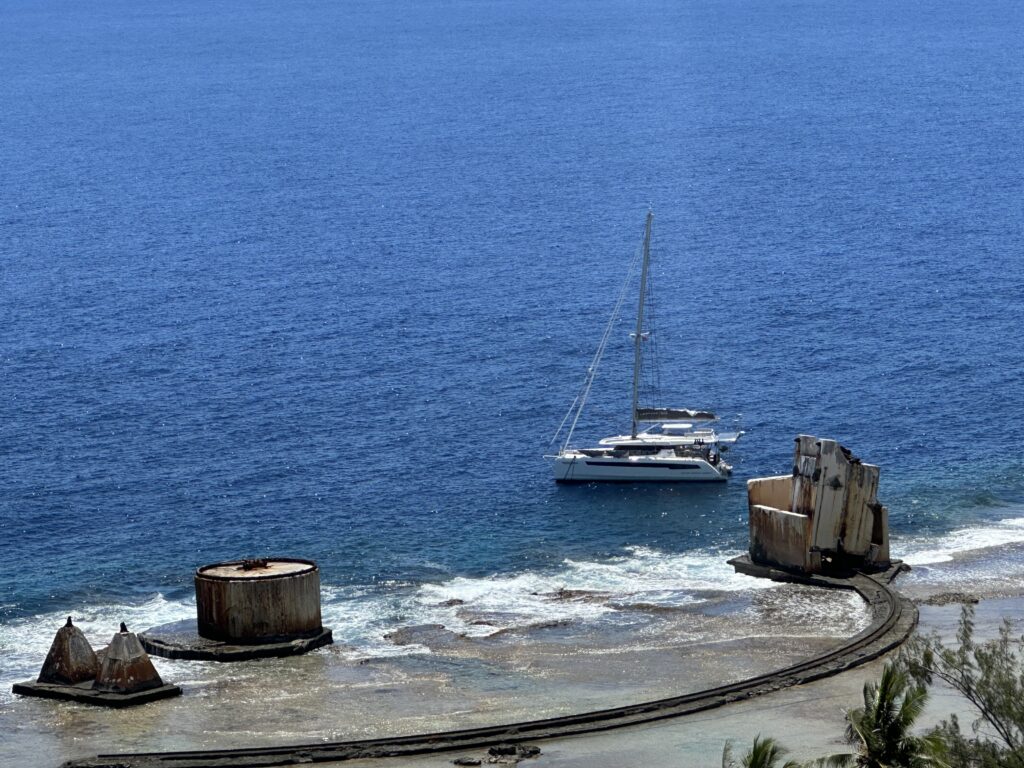
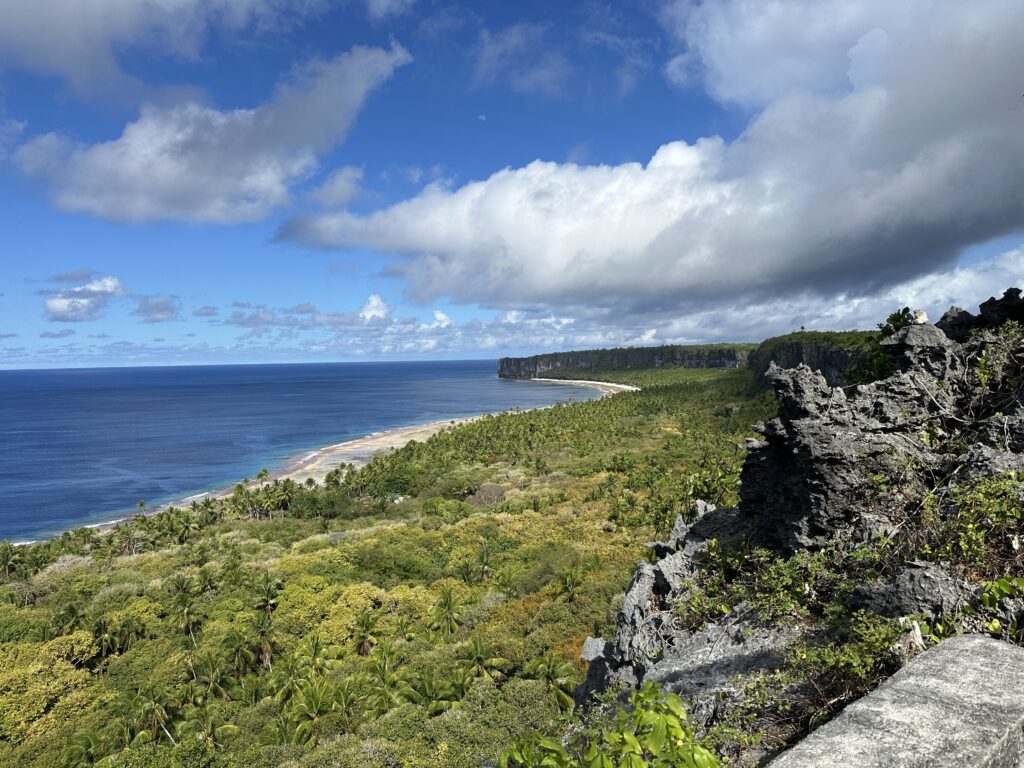
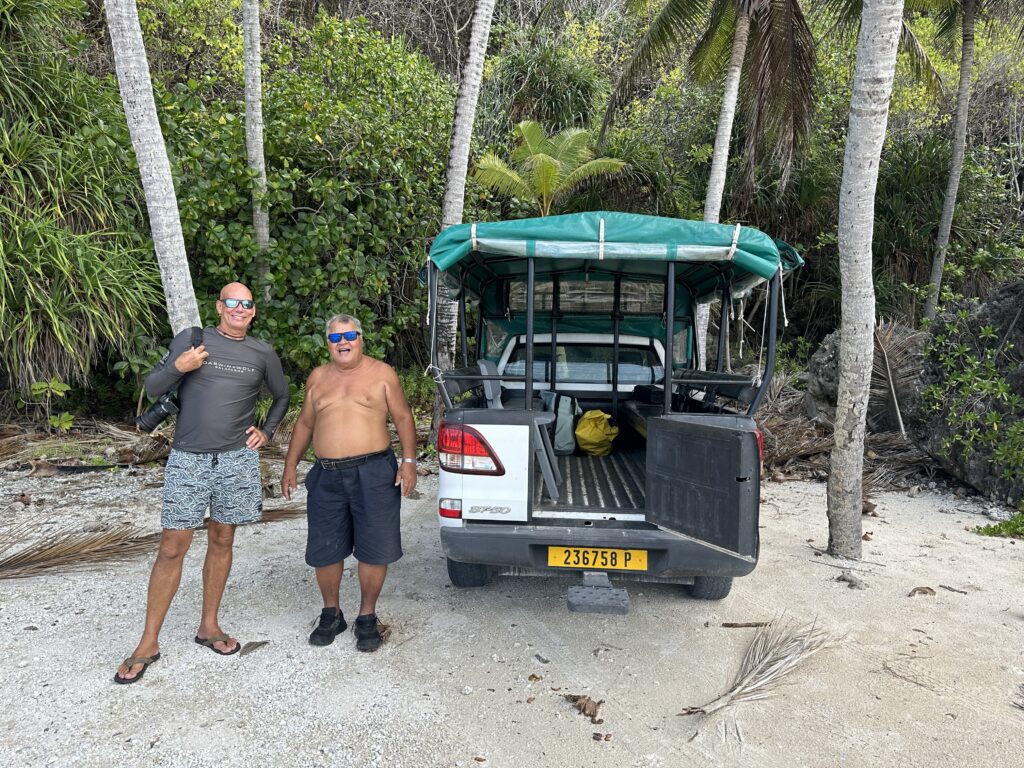
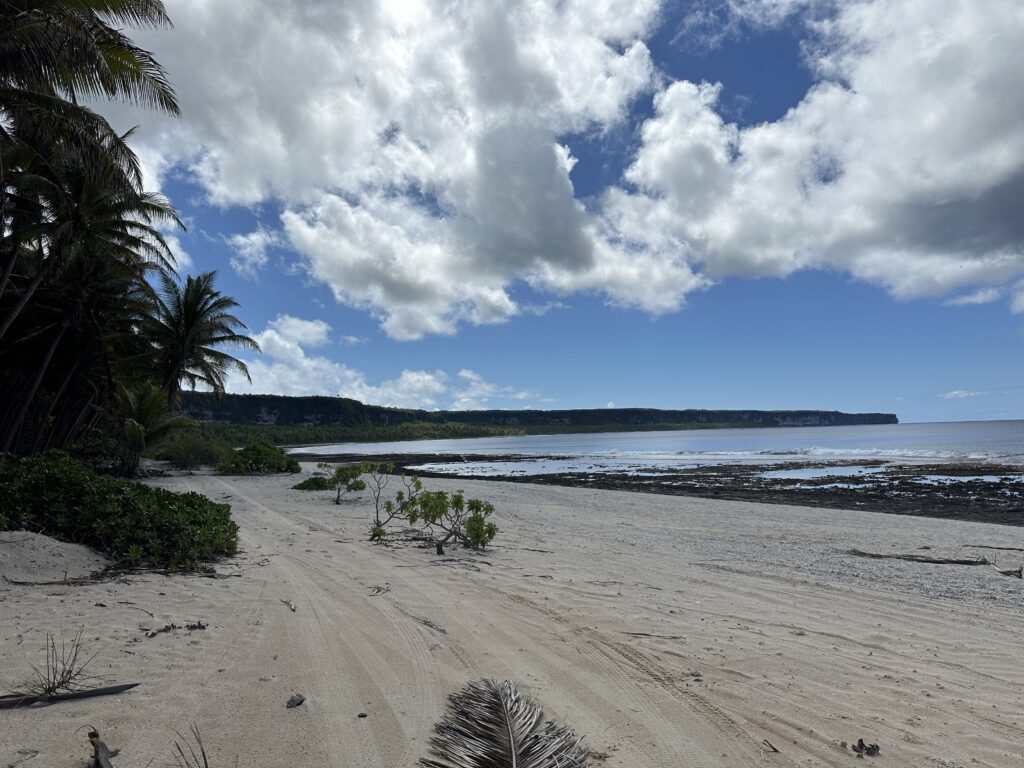
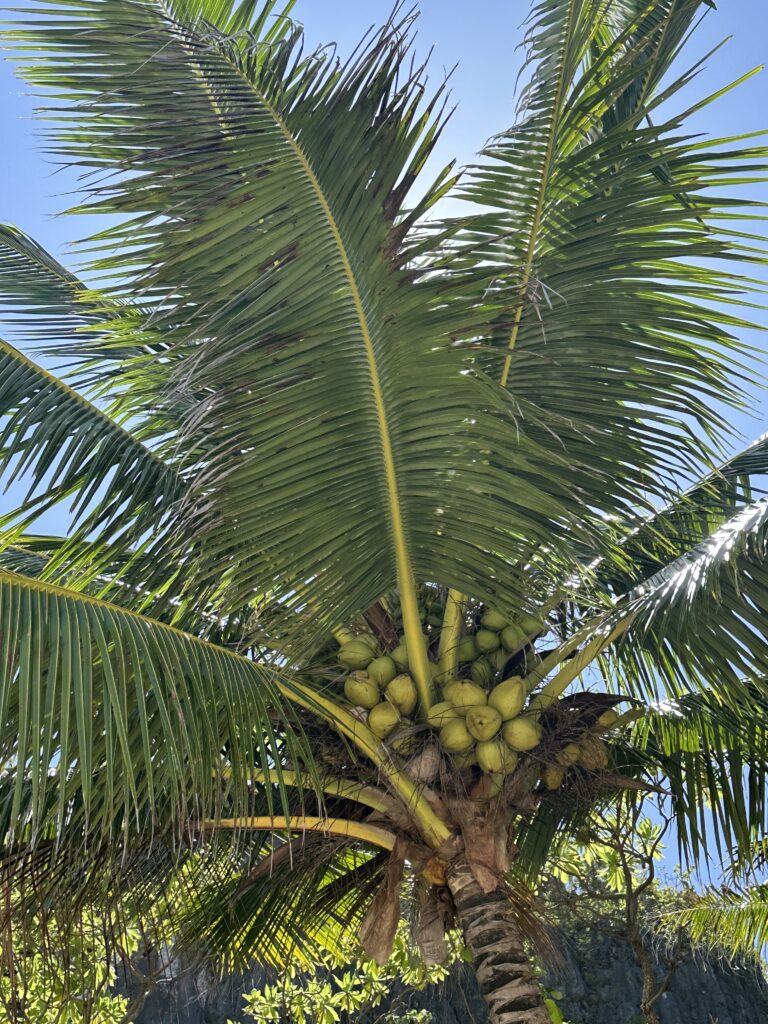
This used to be where the main town of Makatea was located. Back then, the main industry of the island was copra farming, which means growing palm trees with coconuts to produce coconut oil. This was the main industry until phosphate was discovered on the island in the early 1900’s.
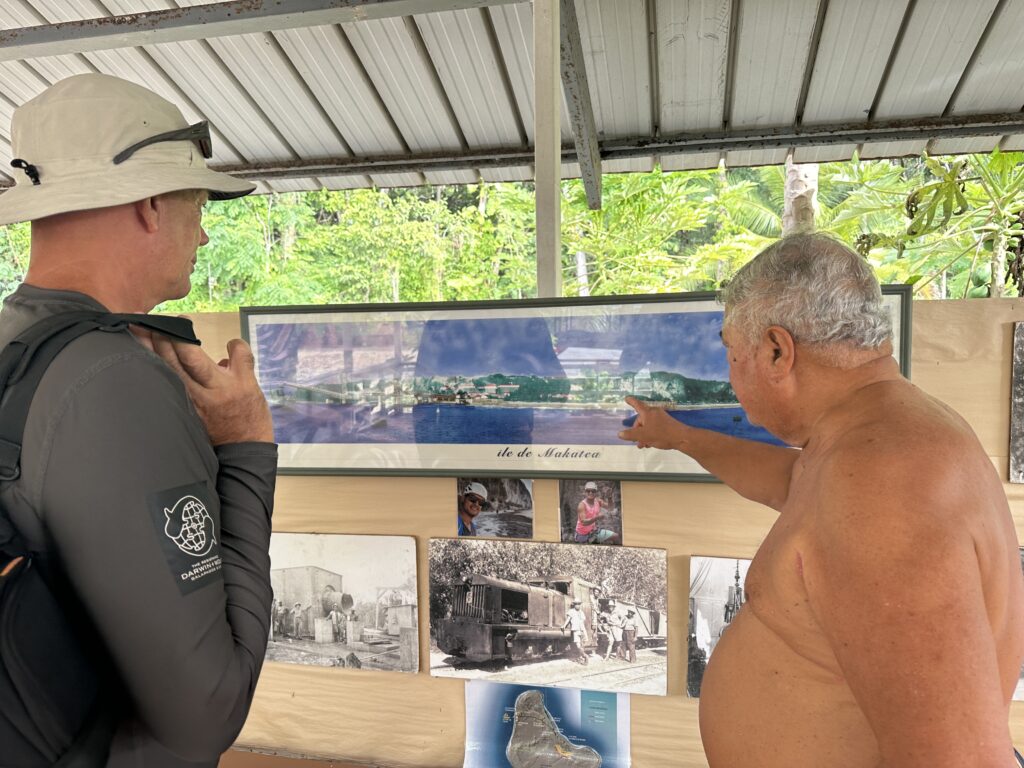
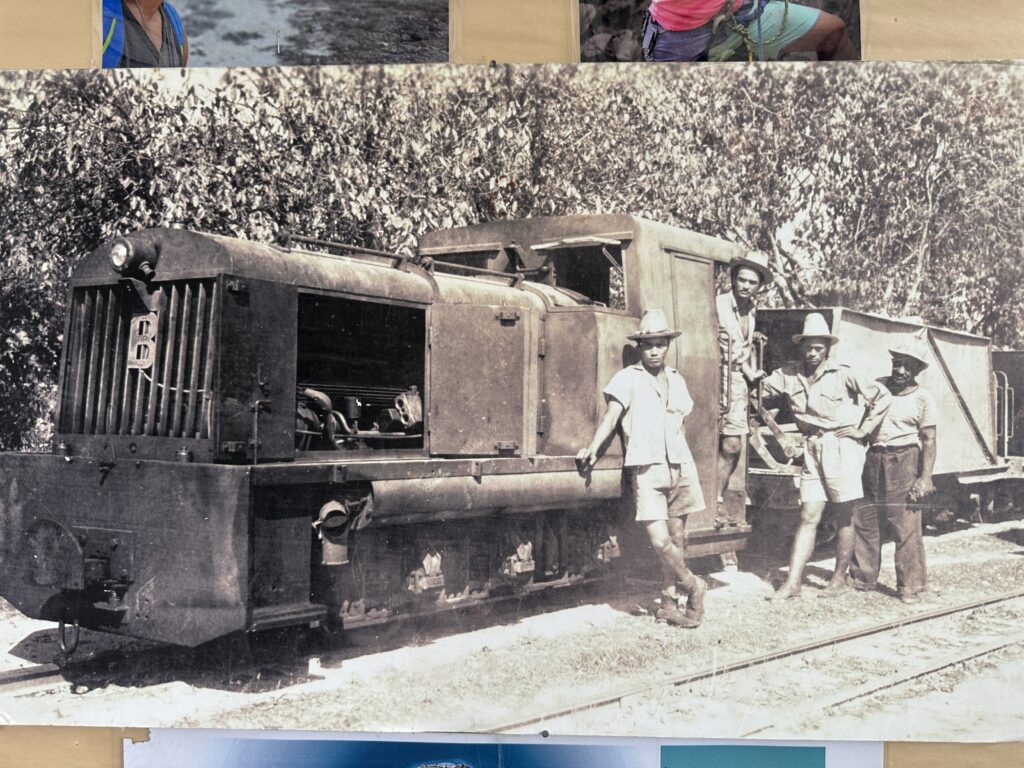
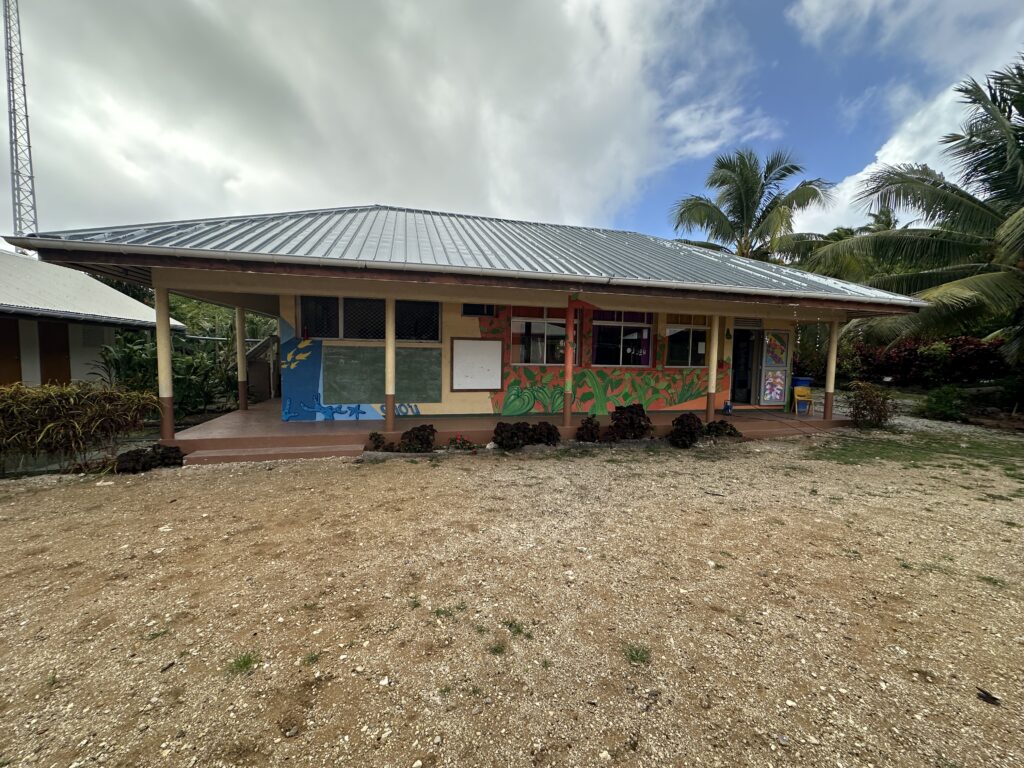
There was elaborate phosphate mining on the island, which lasted for 50 years, 1917 – 1966. At this time, nearly 3,600 people lived on the island. Now, they are down to only 100 inhabitants. The remnants of the production could be seen all over the island. It’s a real shame that the corporation behind this was not given the responsibility to clean up after the exploitation was done.
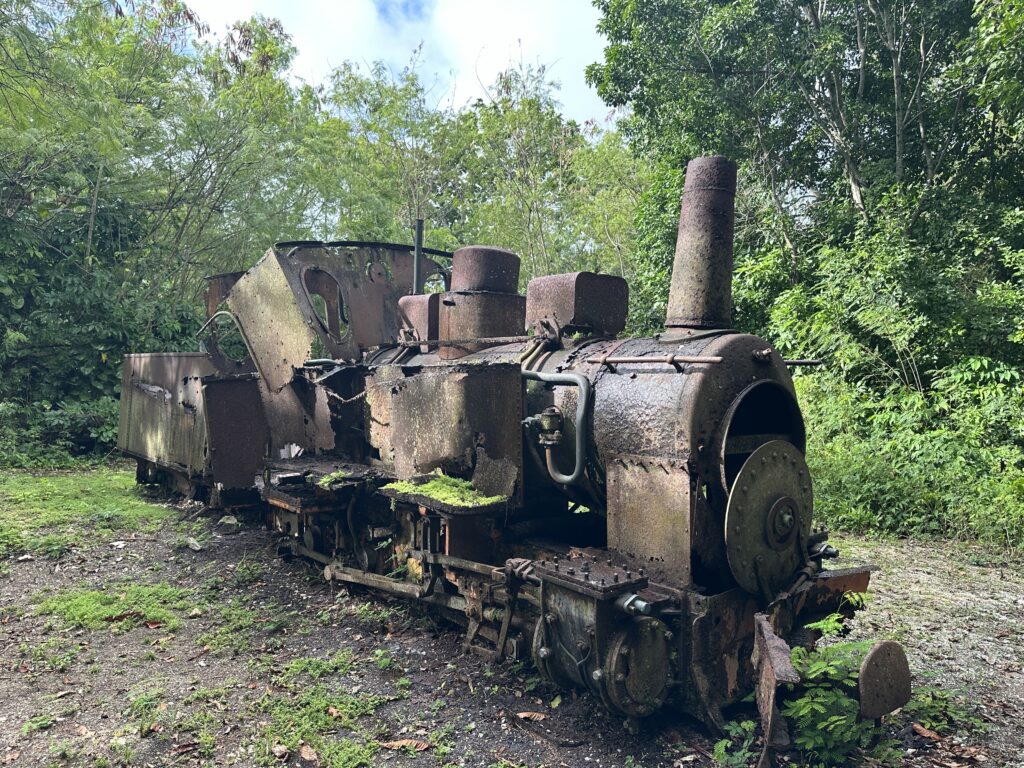
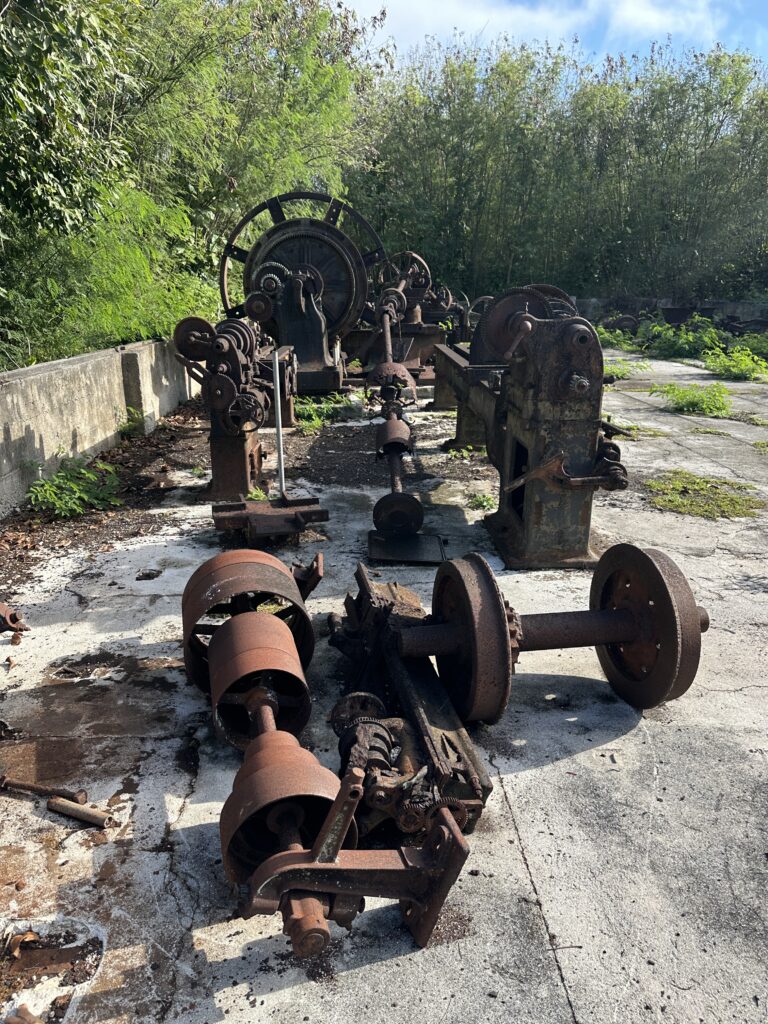
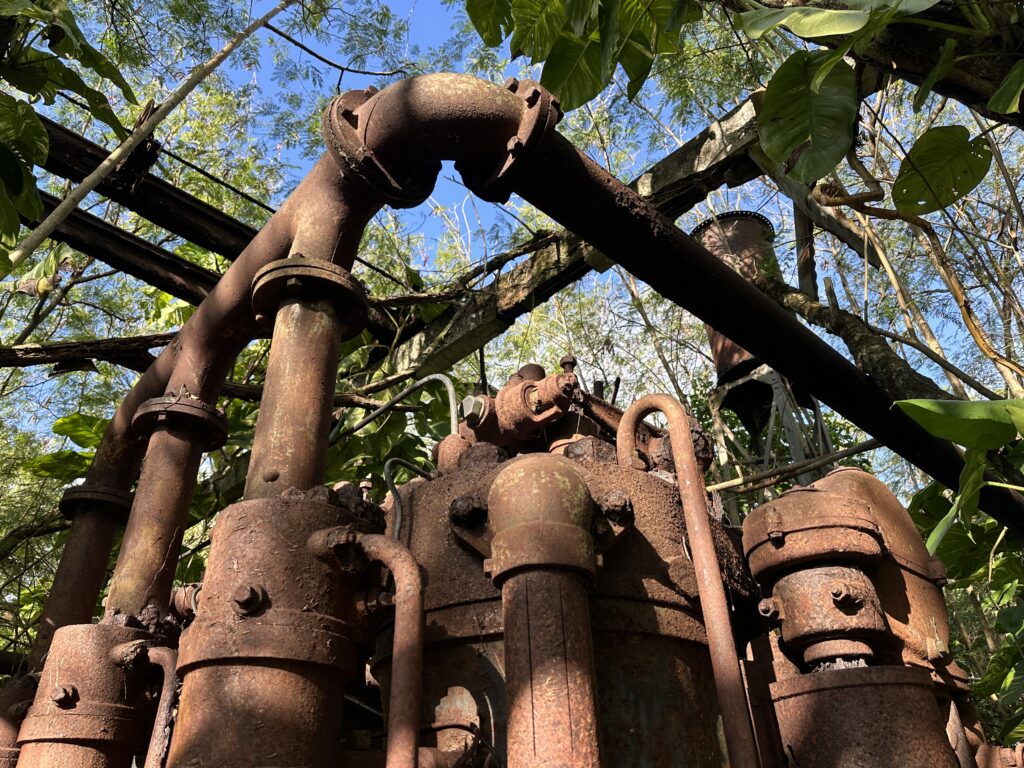
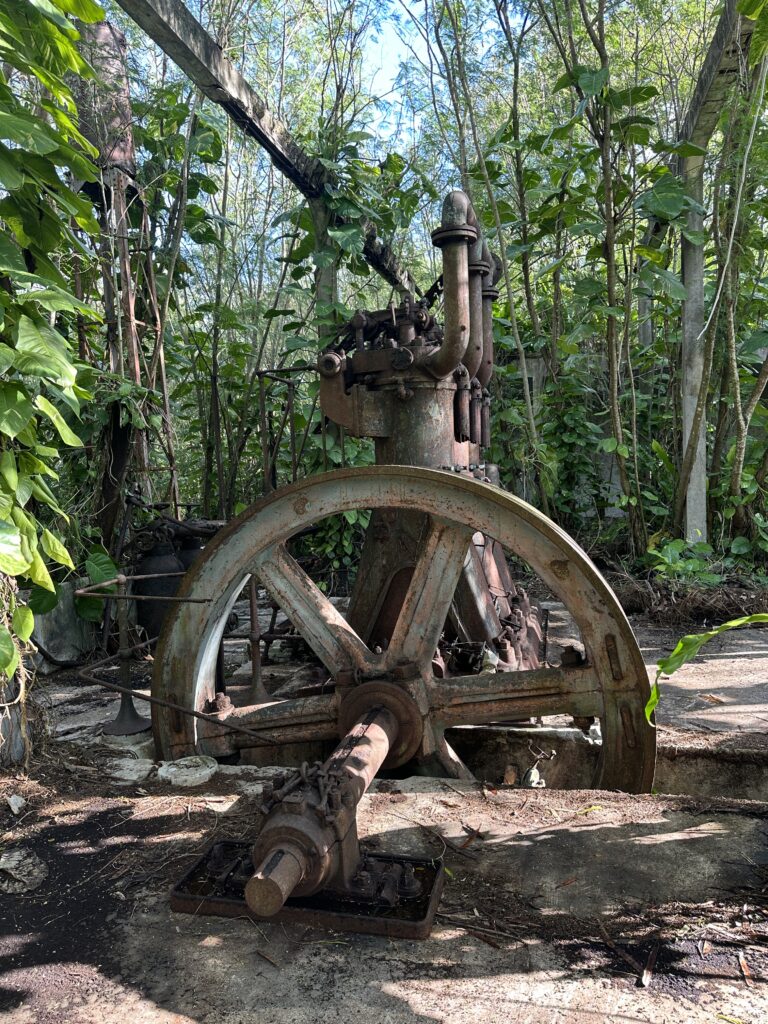
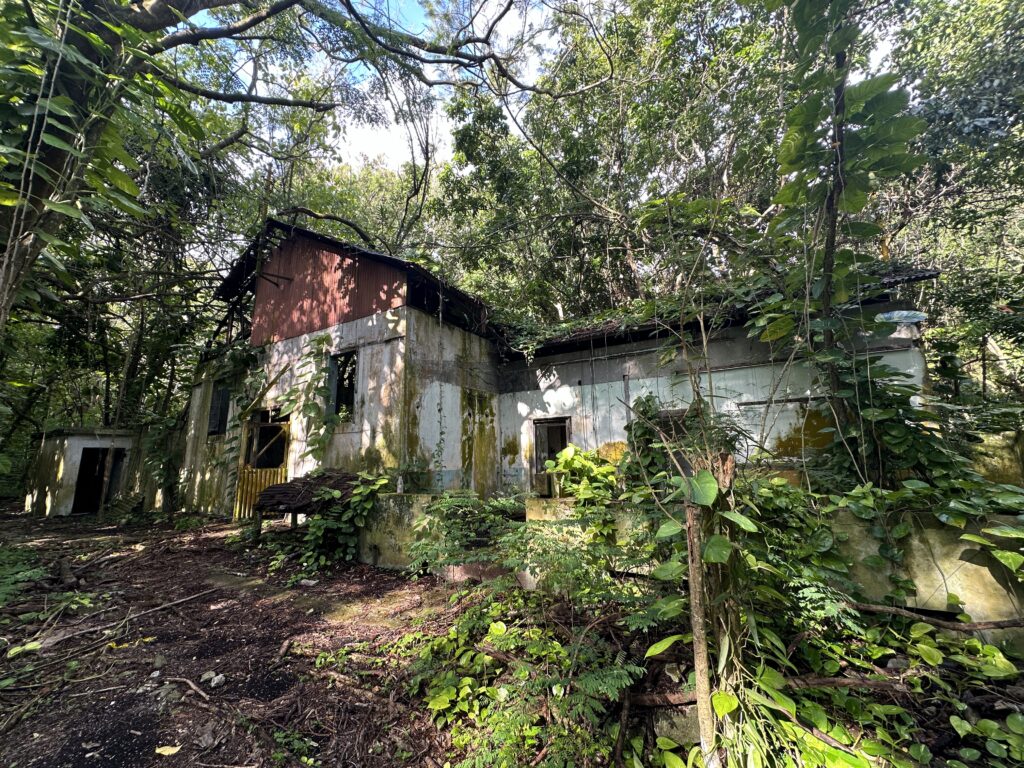
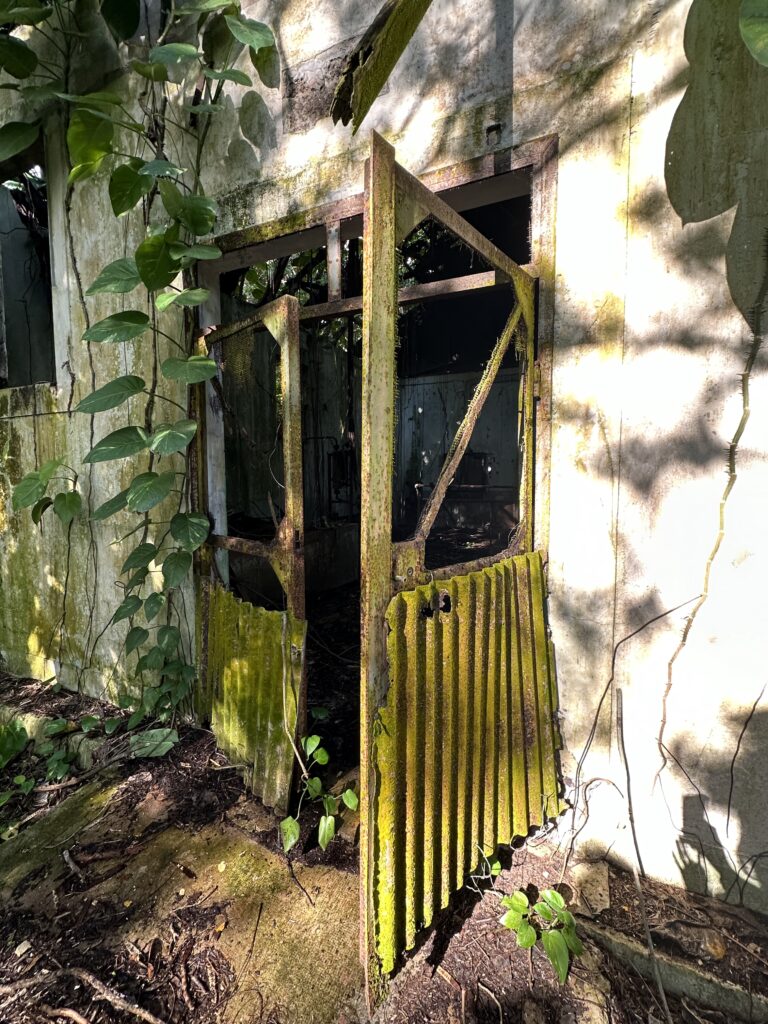
Phosphate is a natural fertilizer, and still remains in the ground here. This means that everything grows on this island. Julien took us to his garden, where we picked bread fruits and papayas.
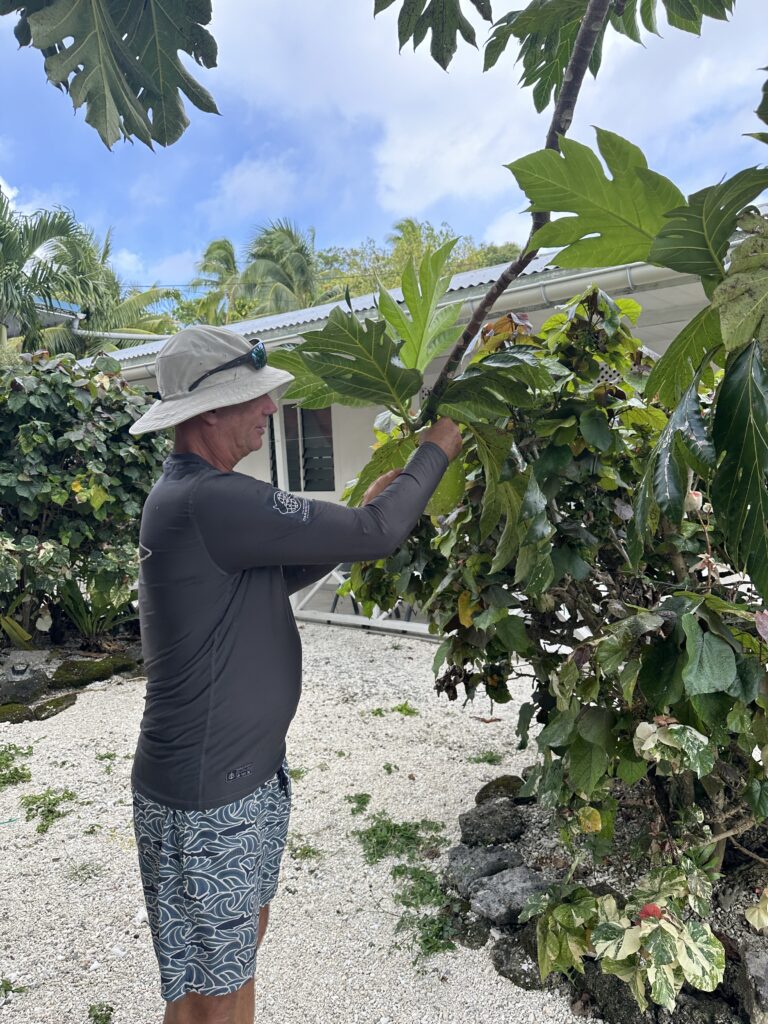
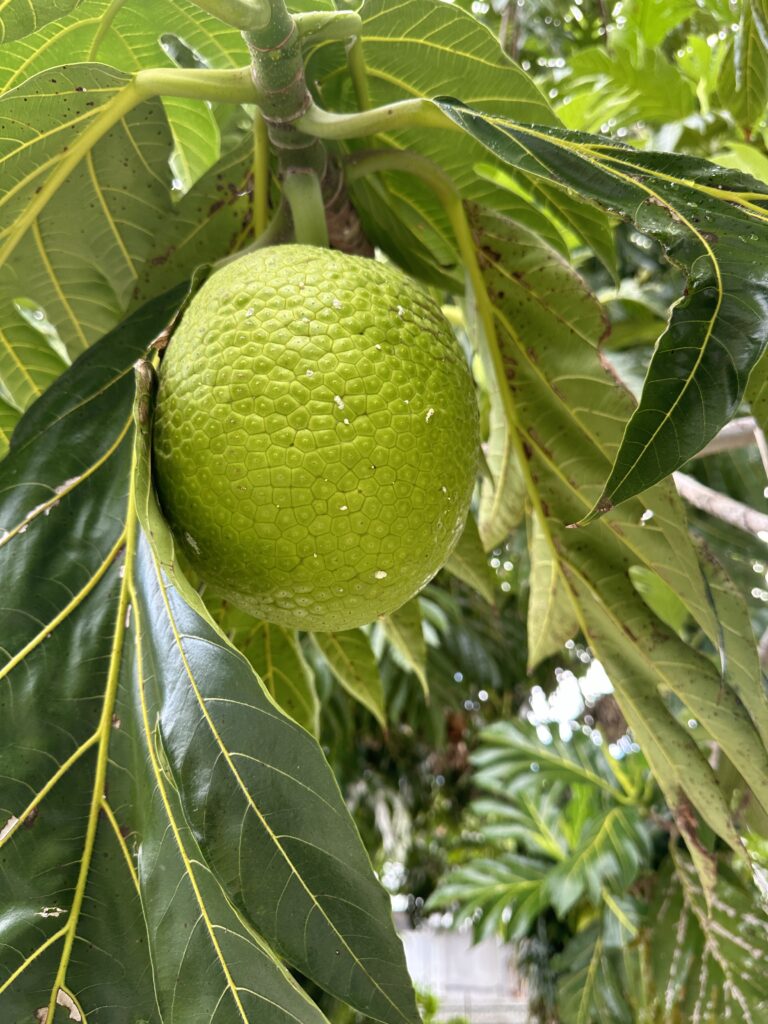
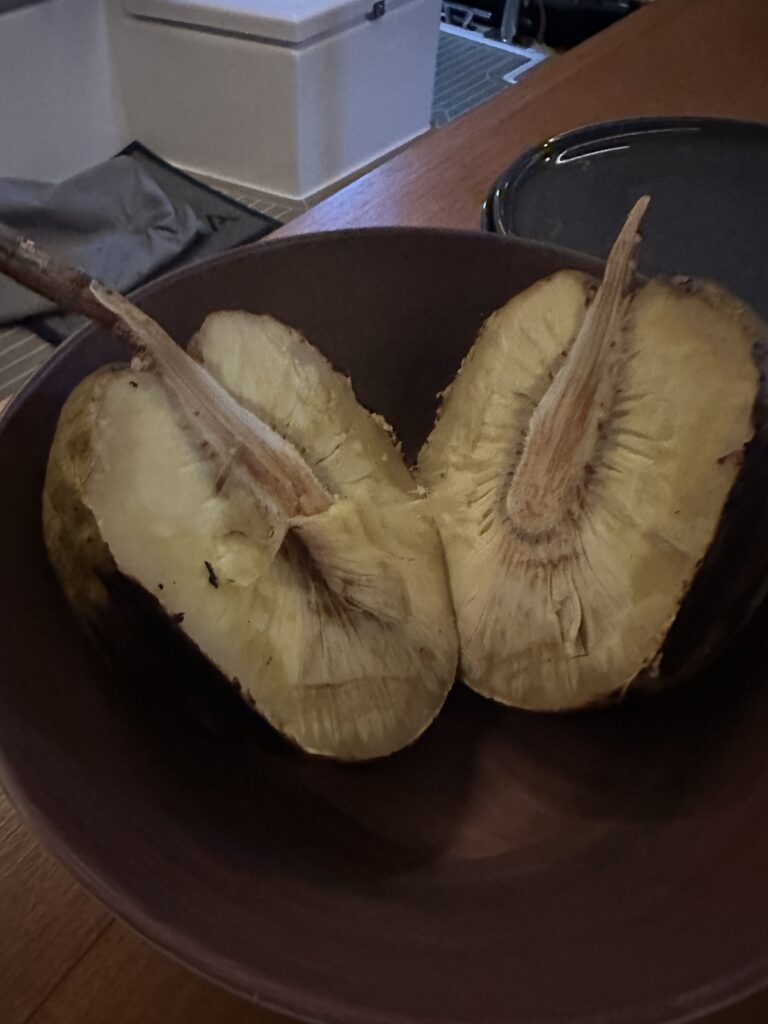
The most special stop of the island, was the underground fresh water cave. Julien pointed us into a direction in the jungle. We followed the path, and quickly found a hole in the ground. It was dark, and with an almost vertical descent into the cave.
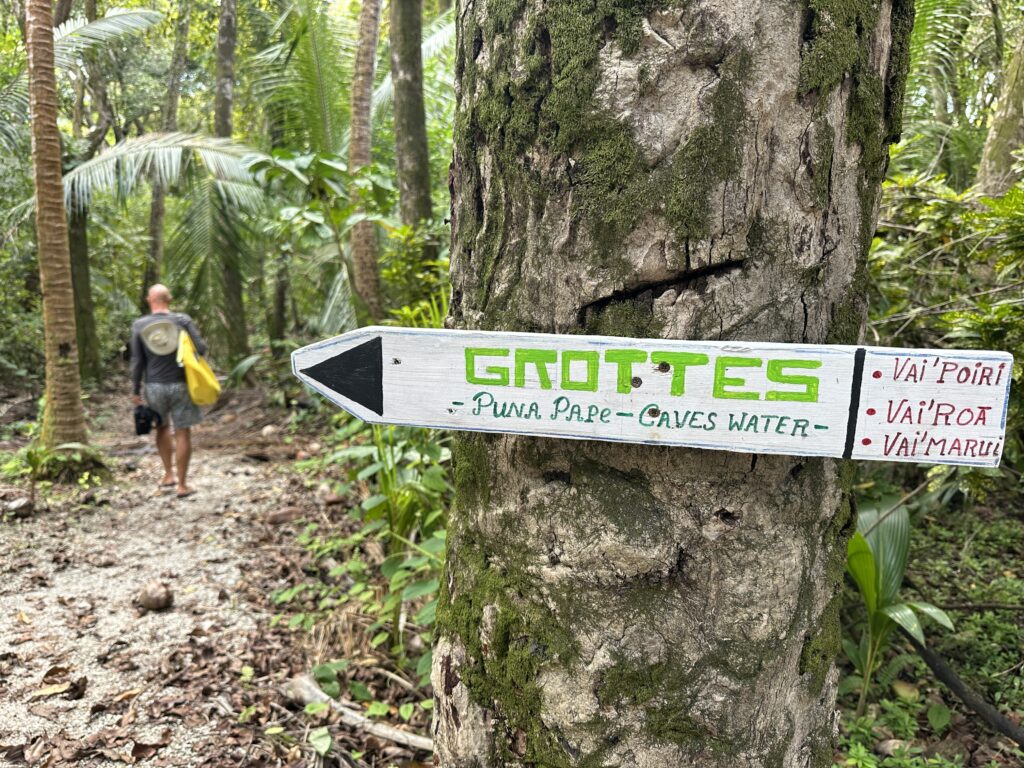
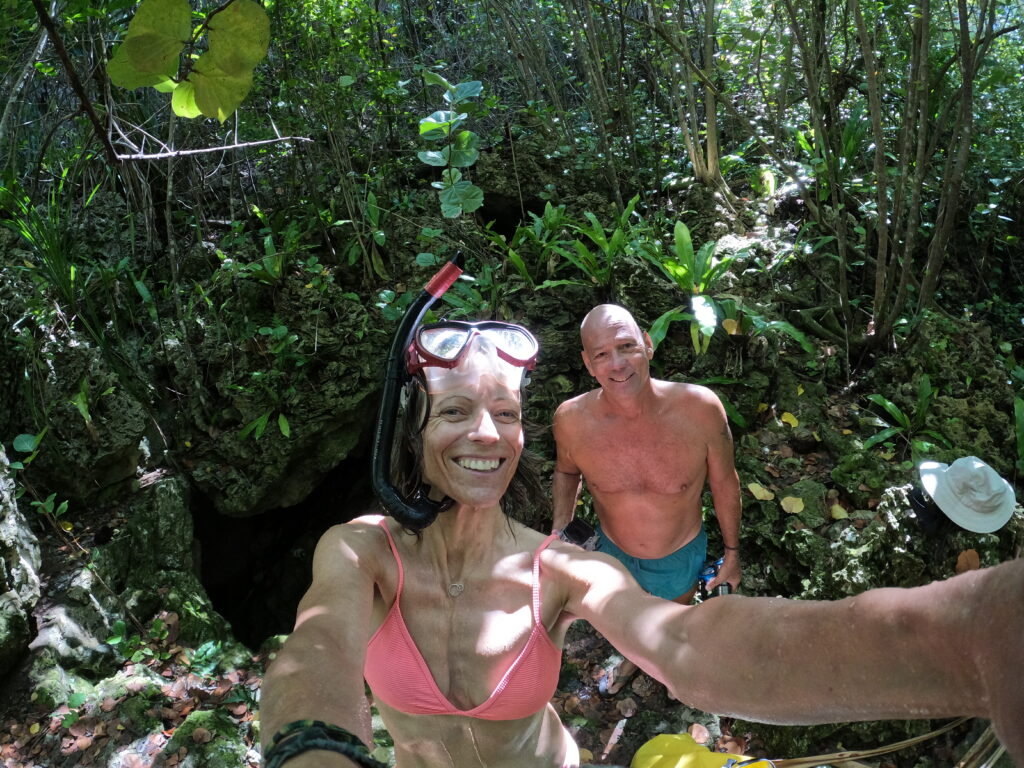
We lit our dive lights, and soon we saw an amazing room opening before our eyes. There were stalactites and stalagmites all around us. The caves are 600 meter deep with fresh water, and is the main freshwater reservoir of the island.
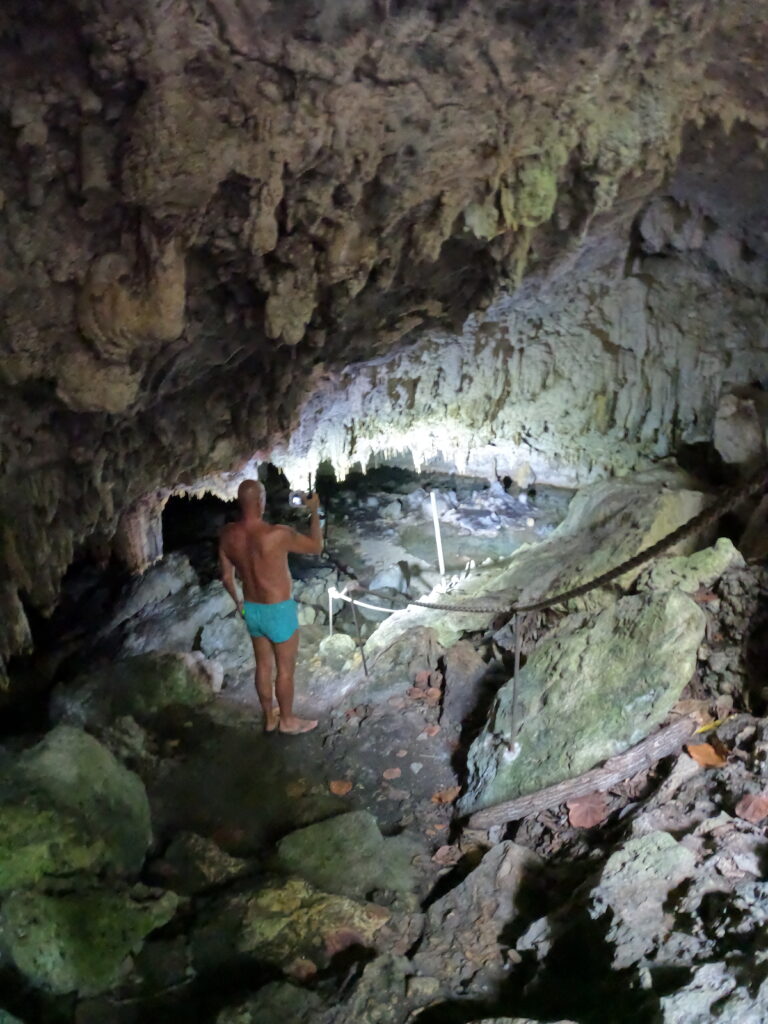
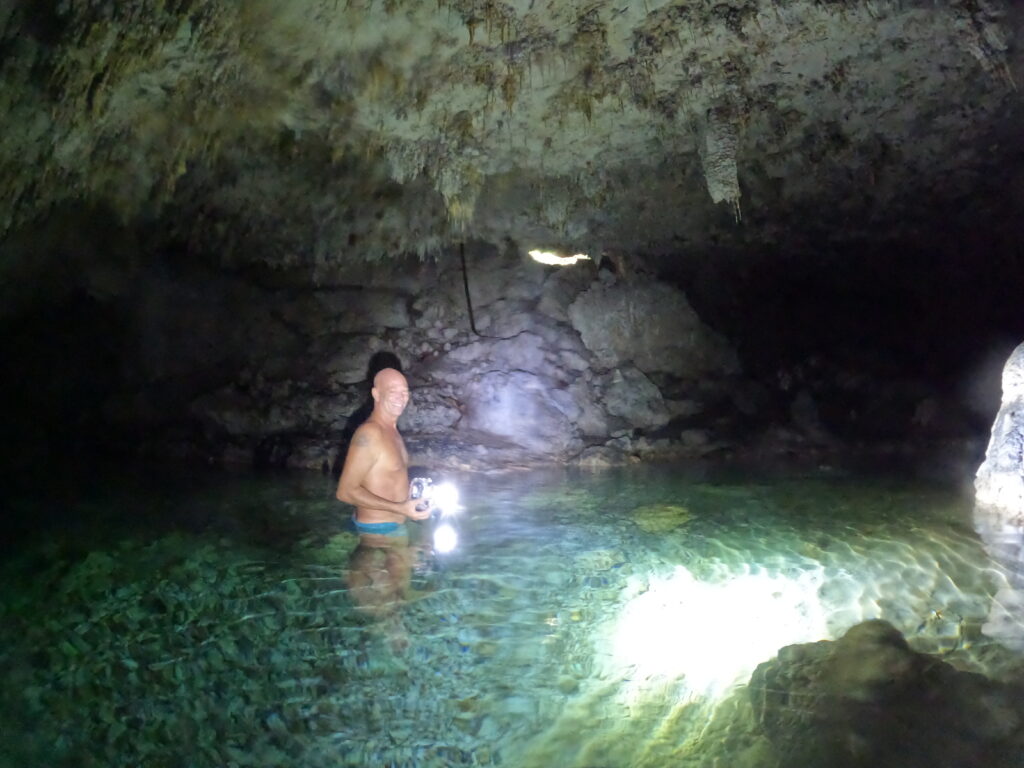
We had the cave all to ourselves, and the captain guided us through the different chambers. The cave has a total of three chambers which we swam through. At some places it was fairly narrow, so it was not so easy navigating through the dark with only our dive lights as guidance.
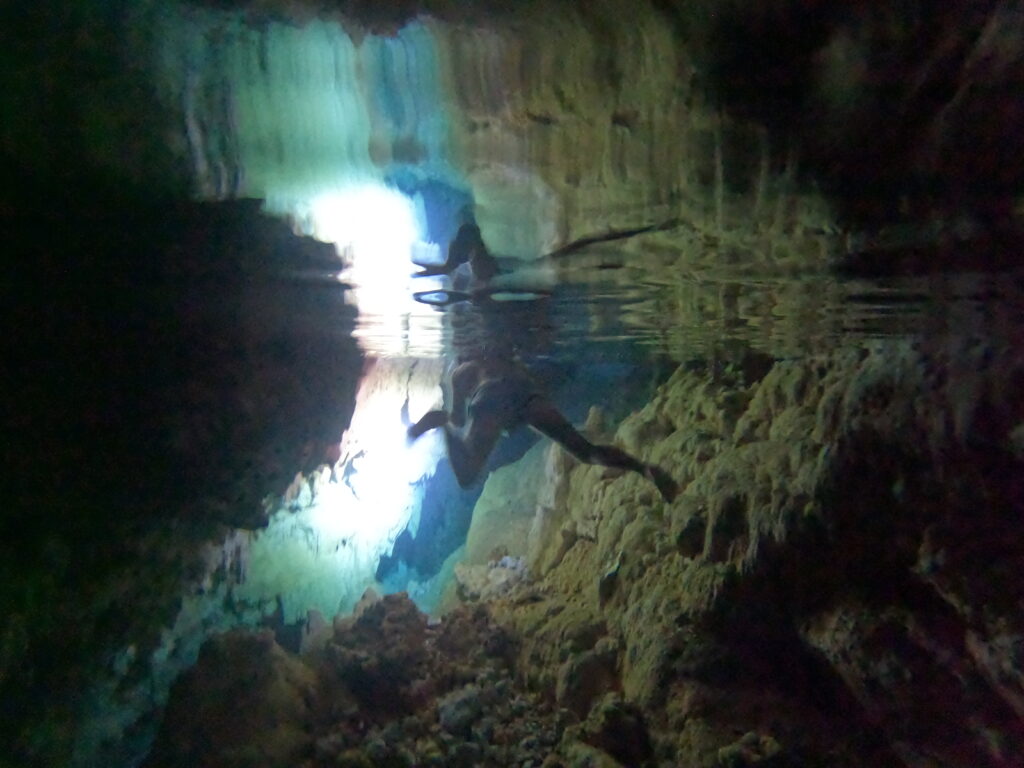
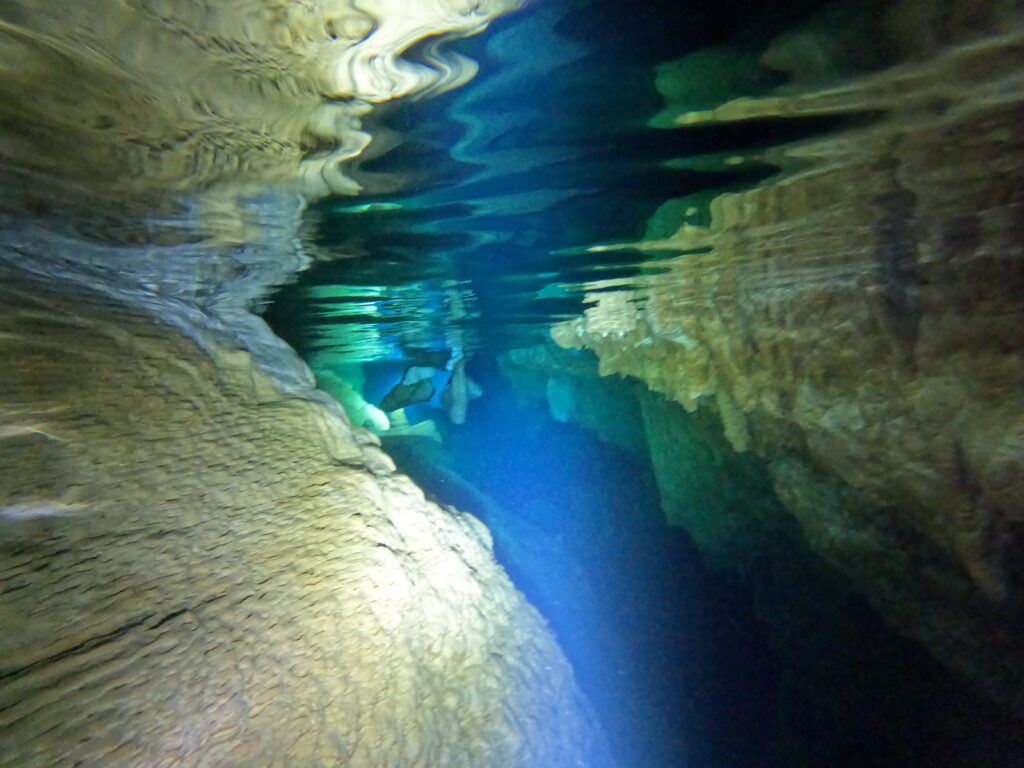
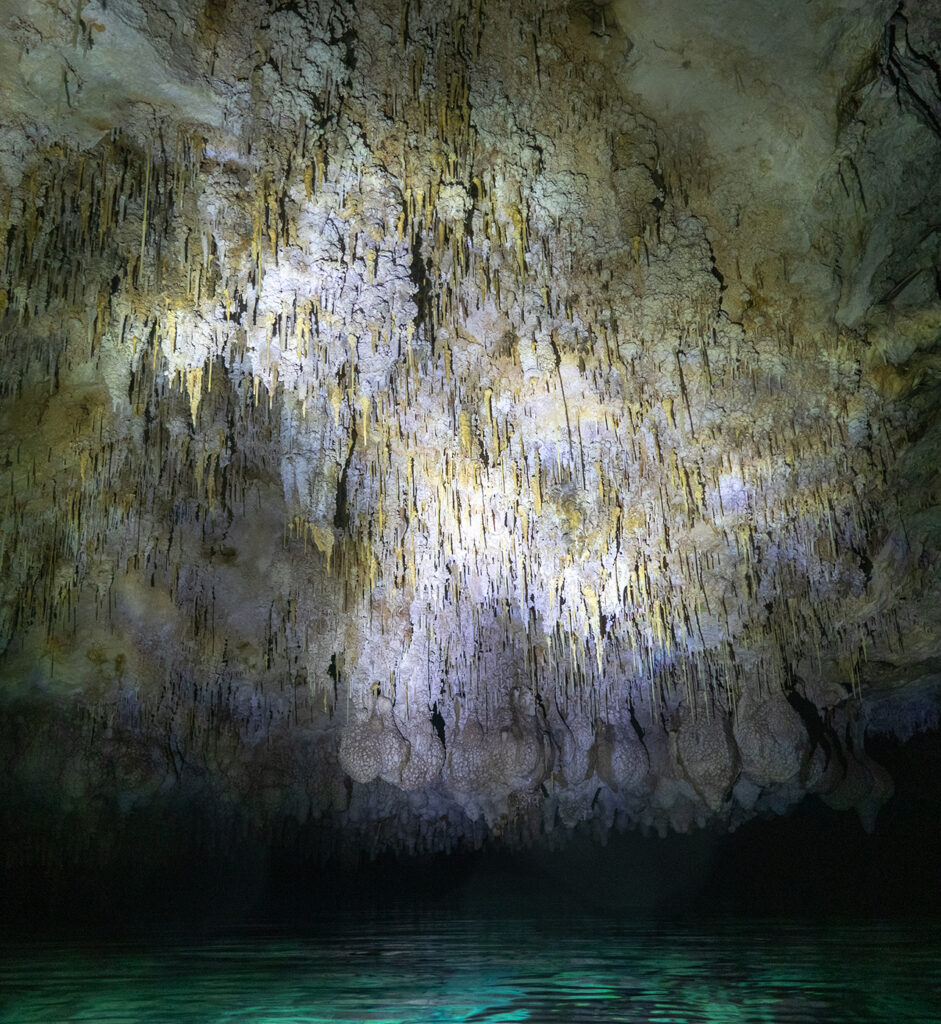
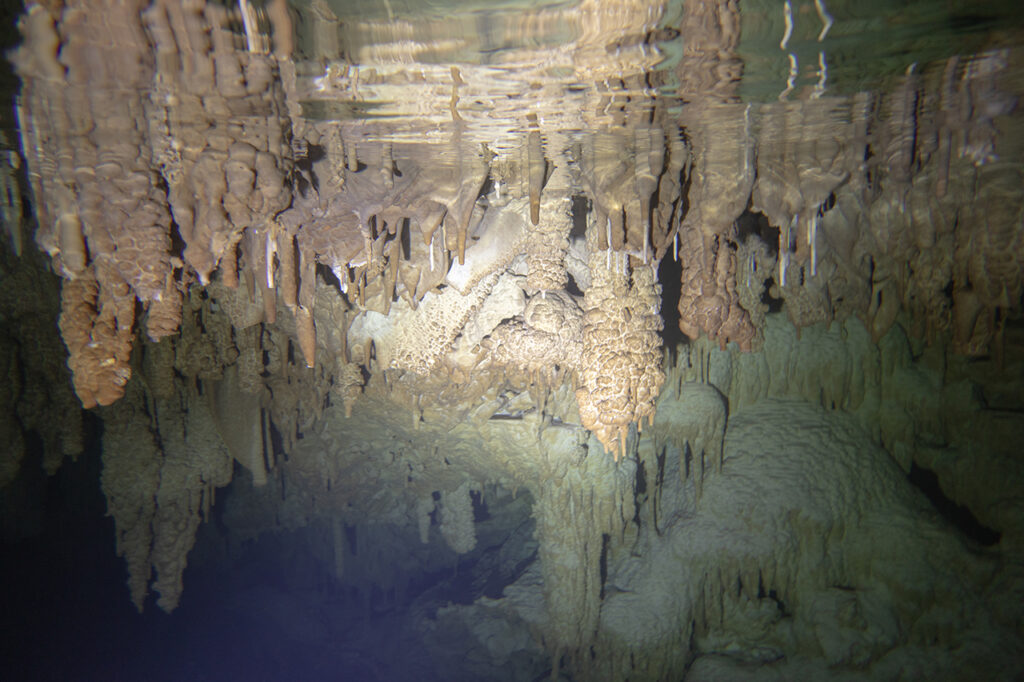
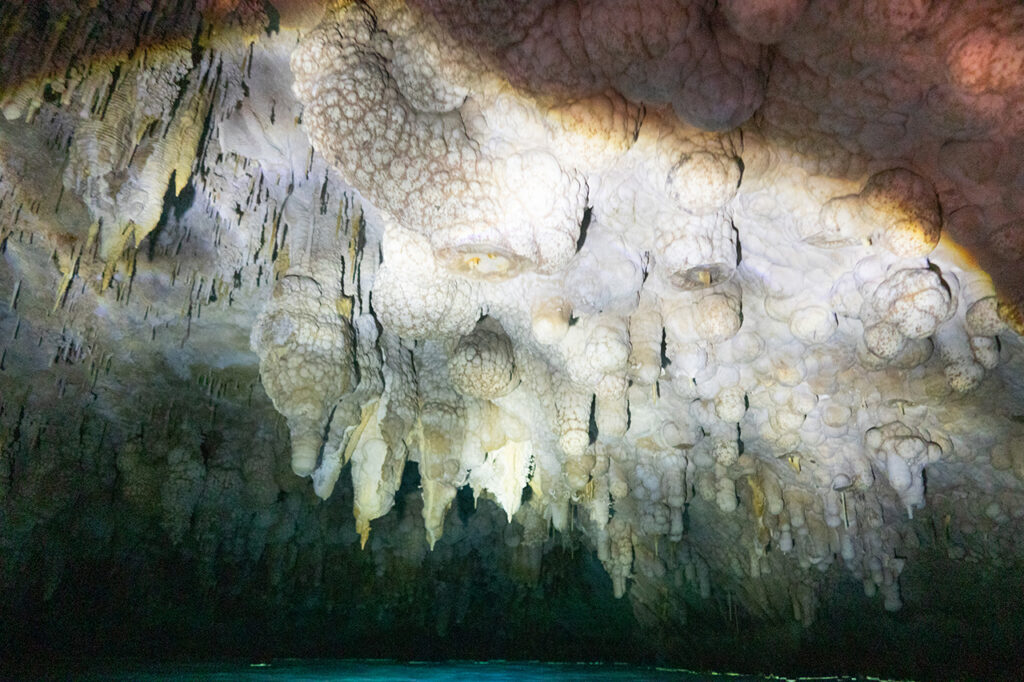
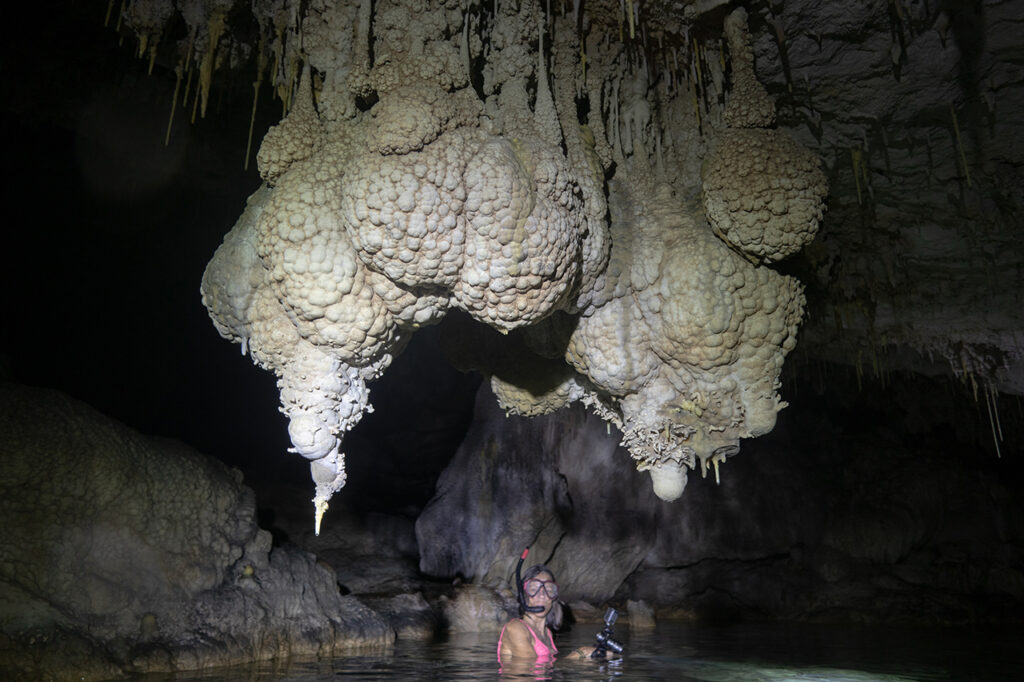
We both agreed that this was the best cave experience we have ever had!
The following day, the wind had died even further, and we decided to stay for one more day. We went for a walk on the beach, right underneath the 80 meter tall cliffs. Julien’s son runs the local climbing club, and has set up this area as a climb area.
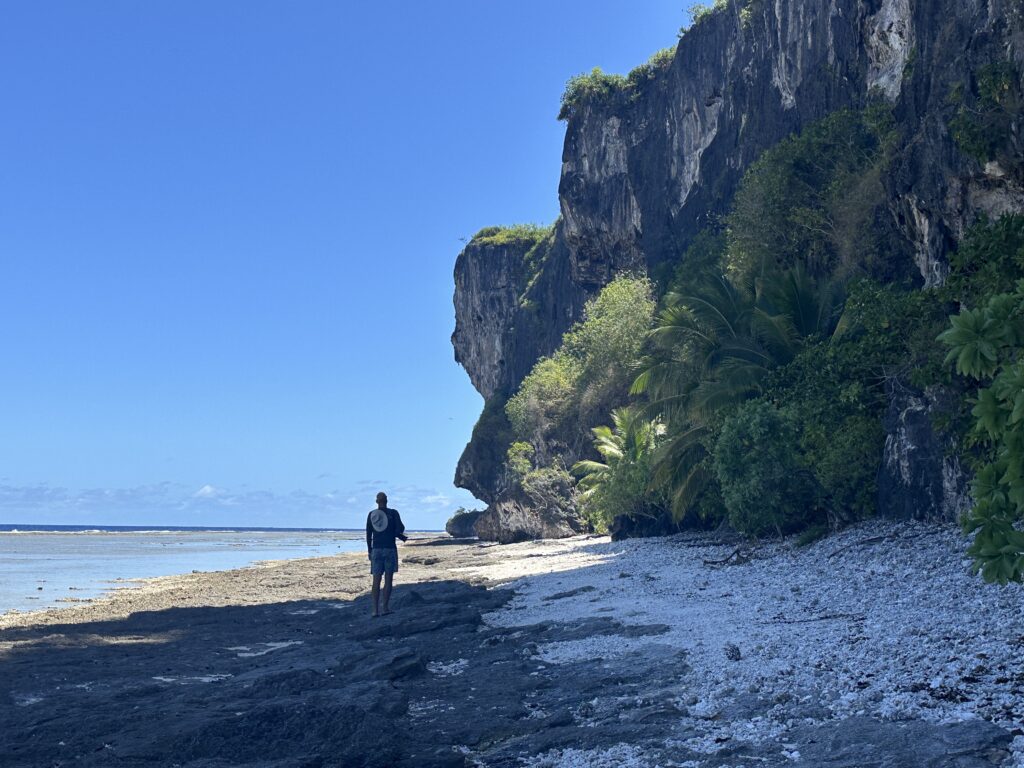
The vertical walls were towering above us, and we were mesmerized by all the shapes we saw in the wall. There are over 100 climbing trails on the island, and we also saw a via ferrata at this location.
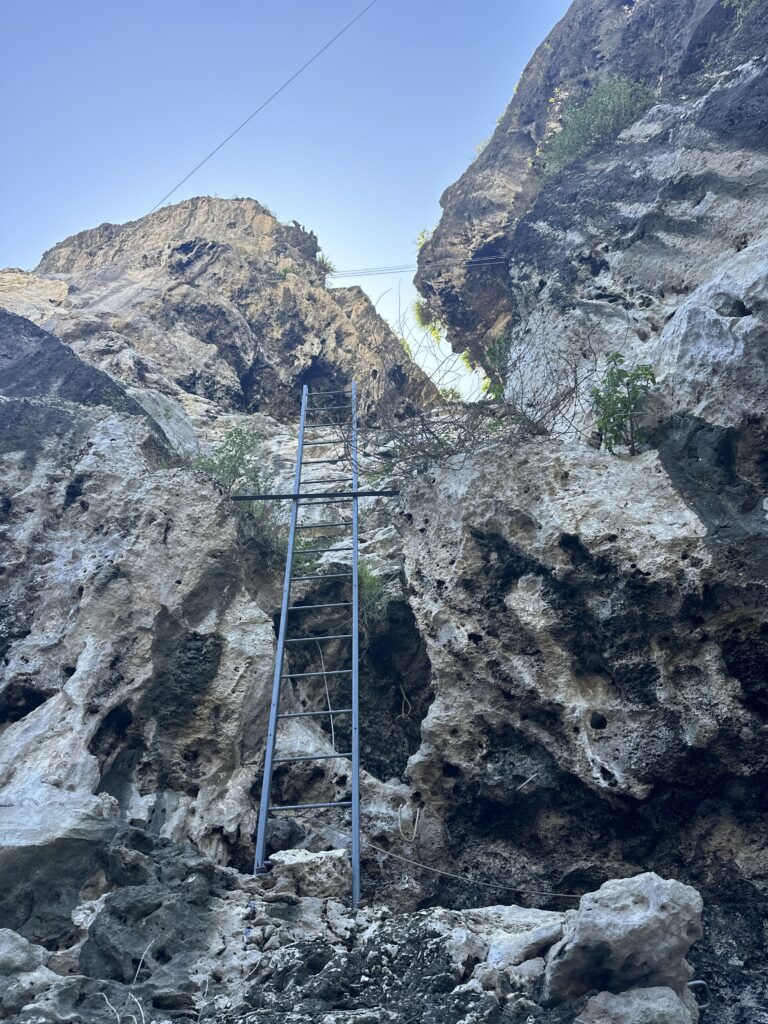
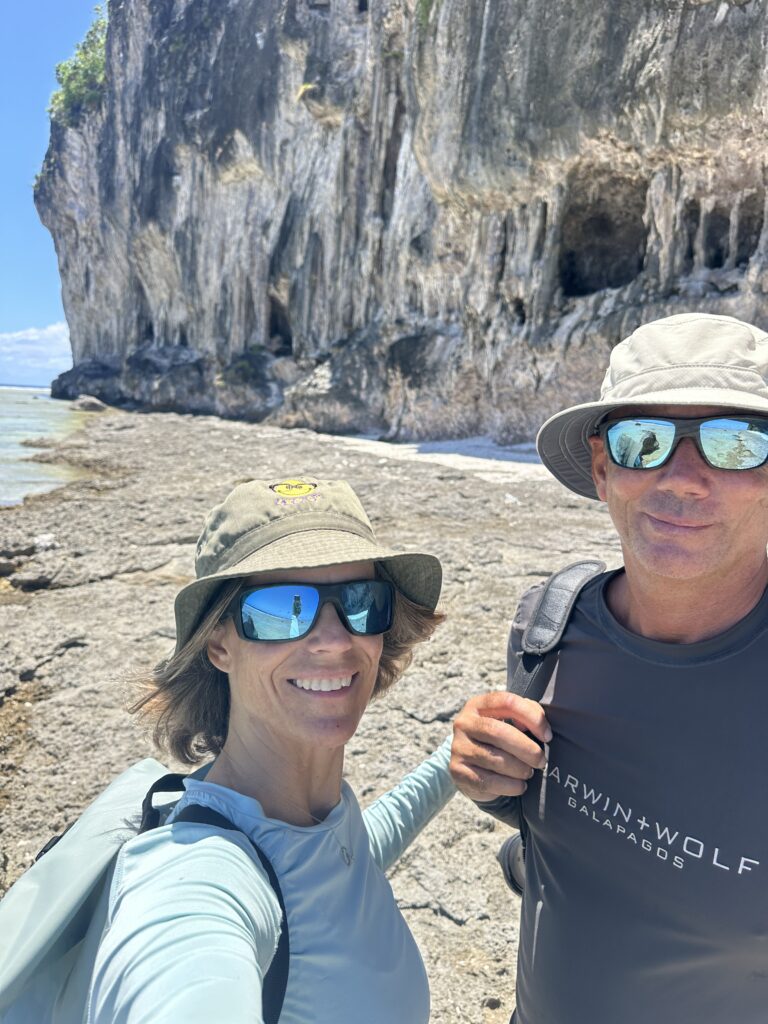
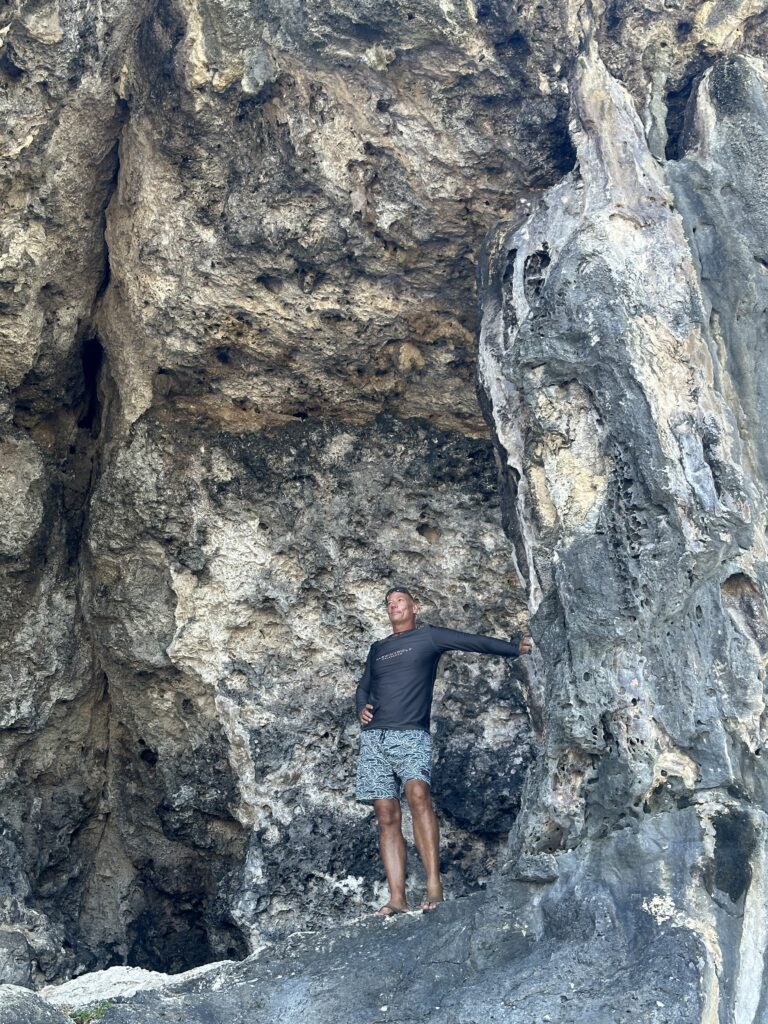
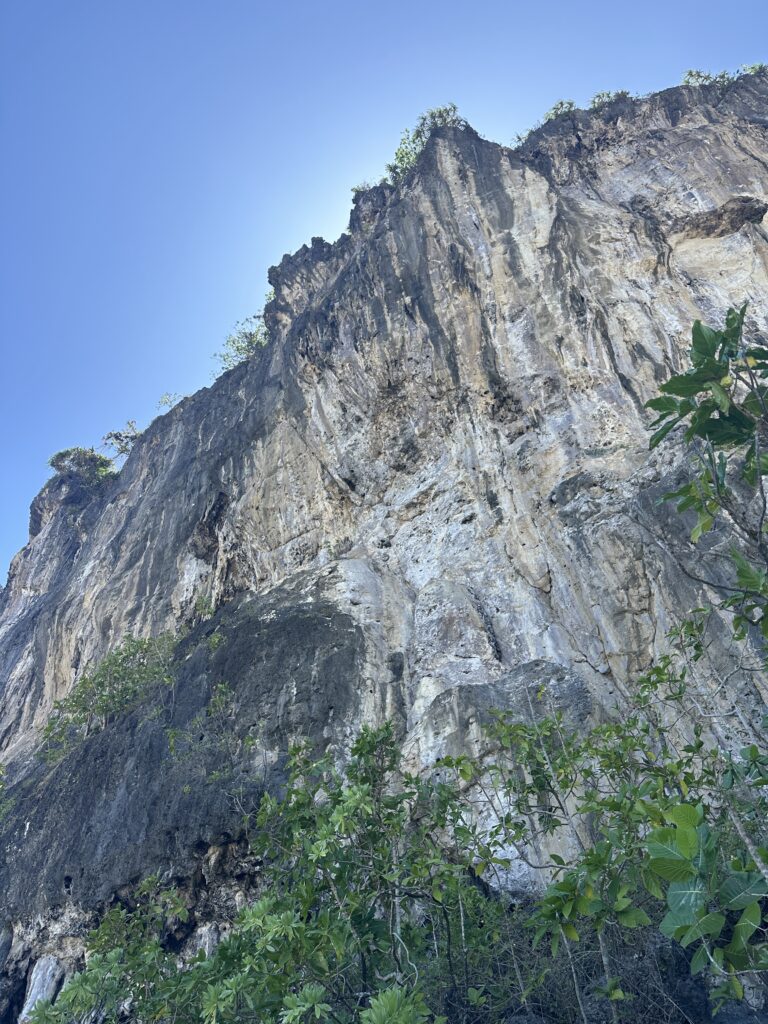
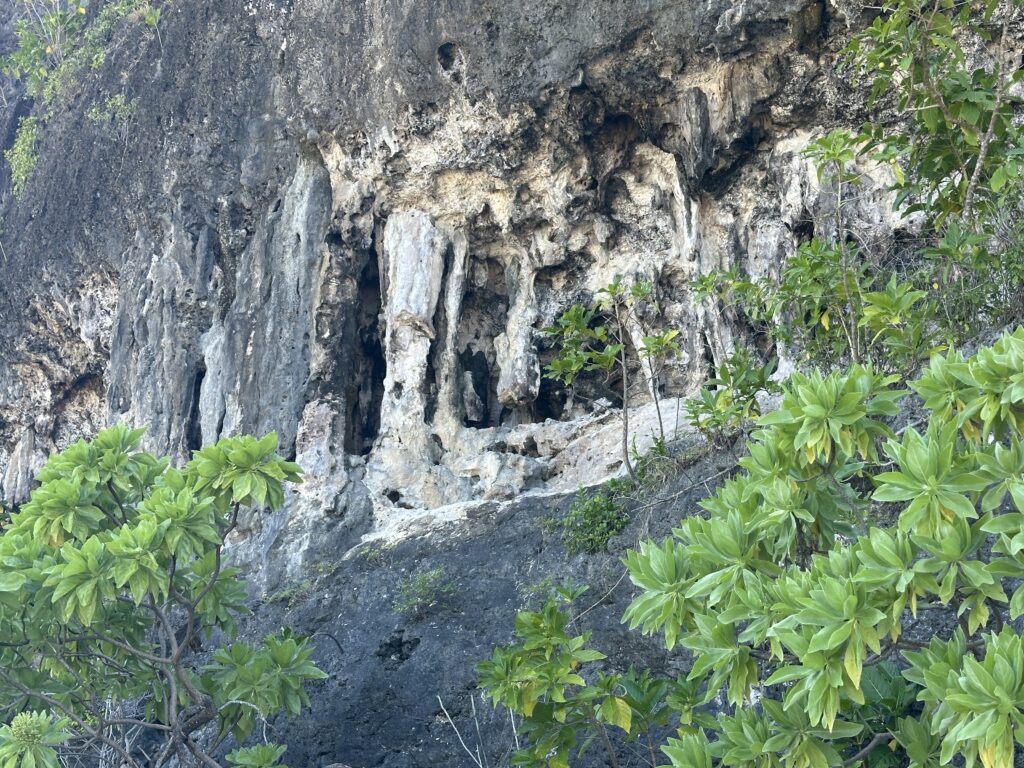
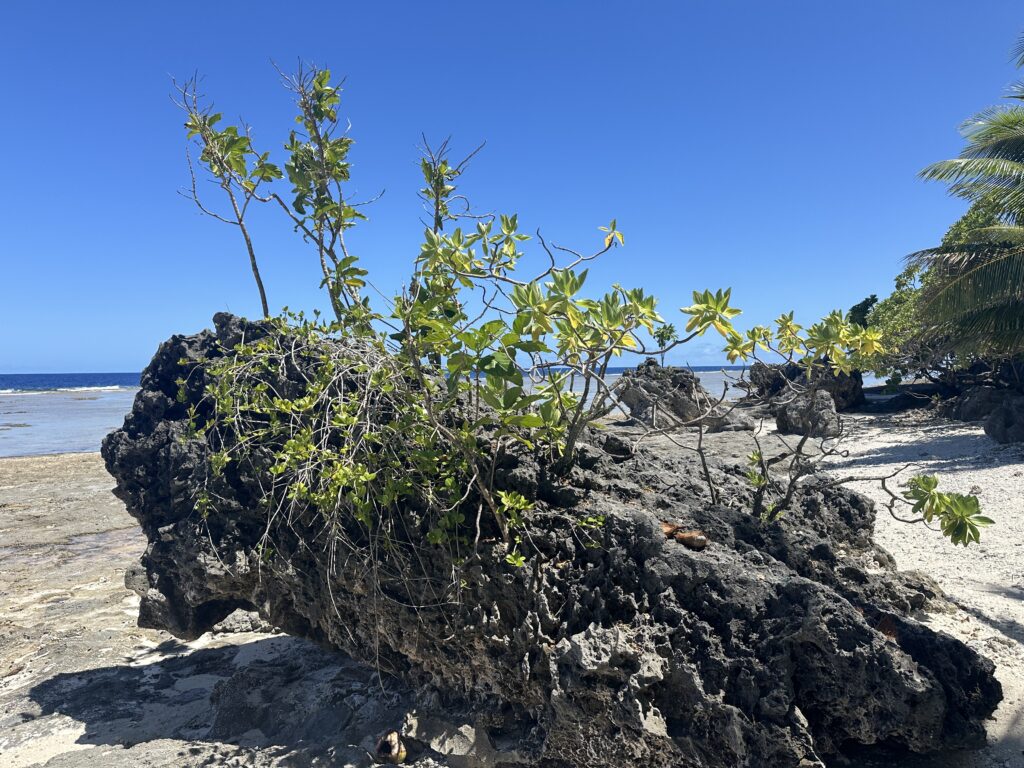
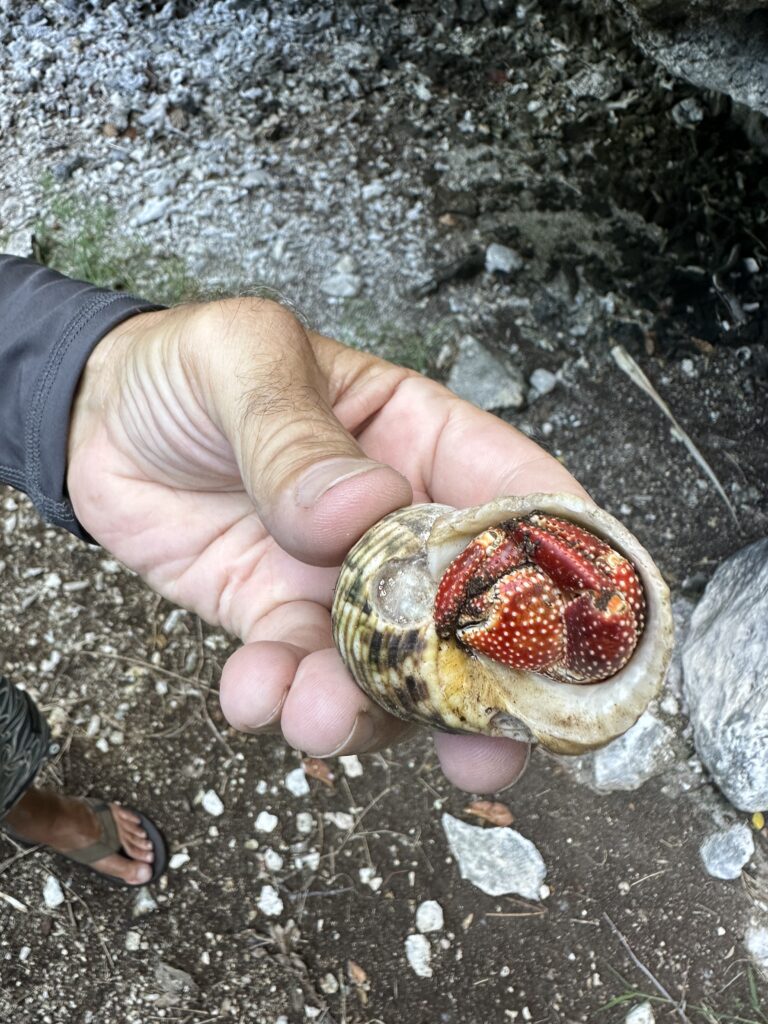
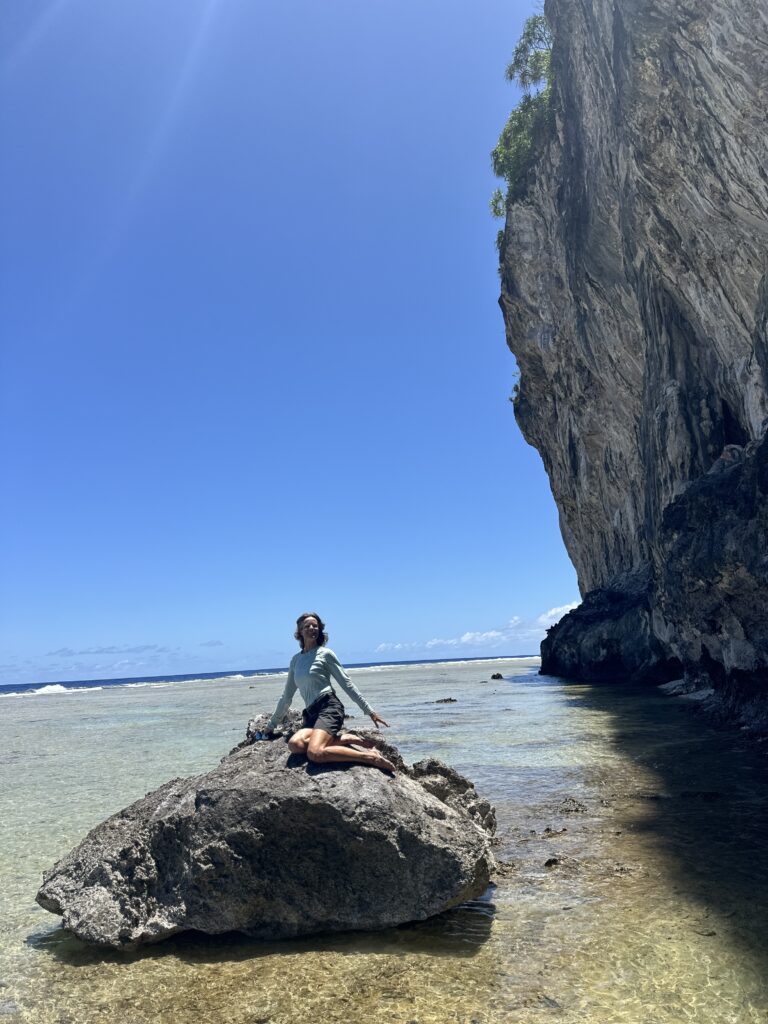
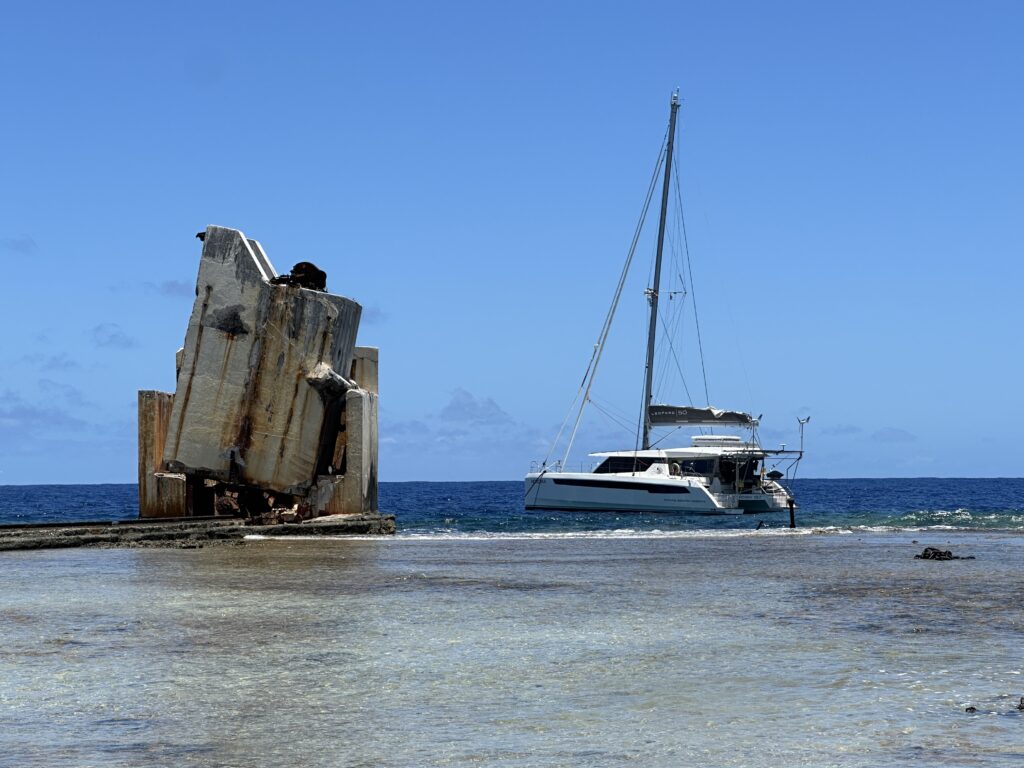
During the day, the wind turned somewhat to the west, which was an unfavorable direction for us. Even with the little winds we had, we had some swell coming in, which we were not too happy about.
We were monitoring the situation and discussing where we should sail next, when we heard a thump from the bow. The captain ran out with the torch in his hand, as it was 20:00 hrs and dark. He quickly saw that the loop in the buoy rope we were attached to, had torn! We were now hanging on by our safety line alone, which went down to the mooring chain below the buoy.
Considering we were very close to the reef, only about 25 meters, we didn’t have much to go by. He quickly got our engines started, and got some tension off our safety line. The deck hand (ie the admiral) got the line detached from our cleat, and the captain maneuvered the boat away from the reef.
The admiral further jumped in the water to retrieve the line, which was still attached to the mooring chain. Lying in the water at dark, in swells with just a dive light to be identified by next to the boat with its motors running, was a little scary. But, it all turned out fine. We retrieved all of our lines, and set out in the dark.
So, this incident decided our next destination. We decided to sail to the atoll at the shortest distance from where we were, and headed towards Tikehau, where we also had friends.
